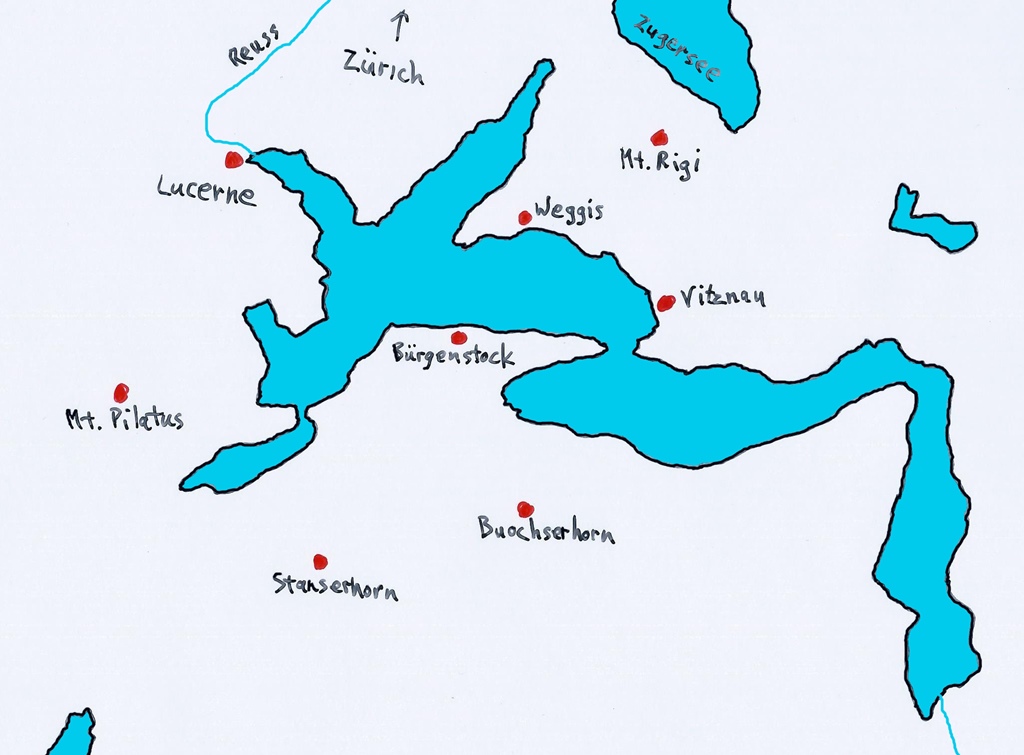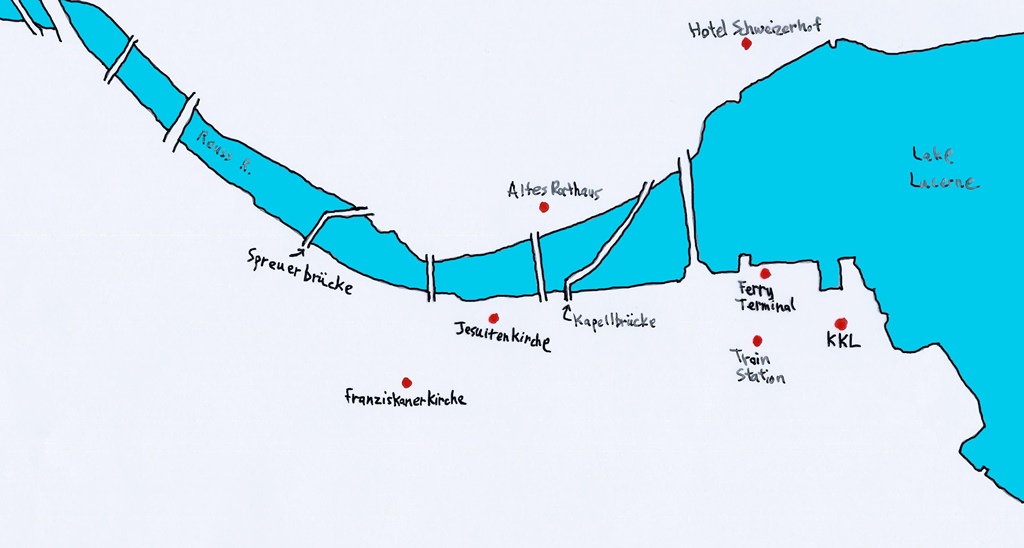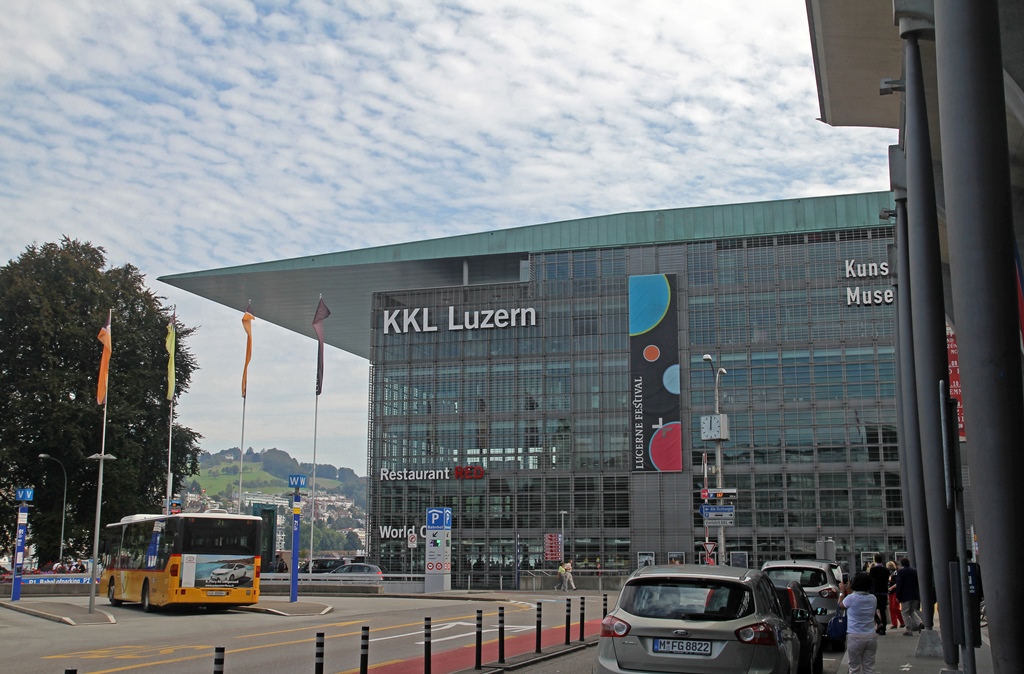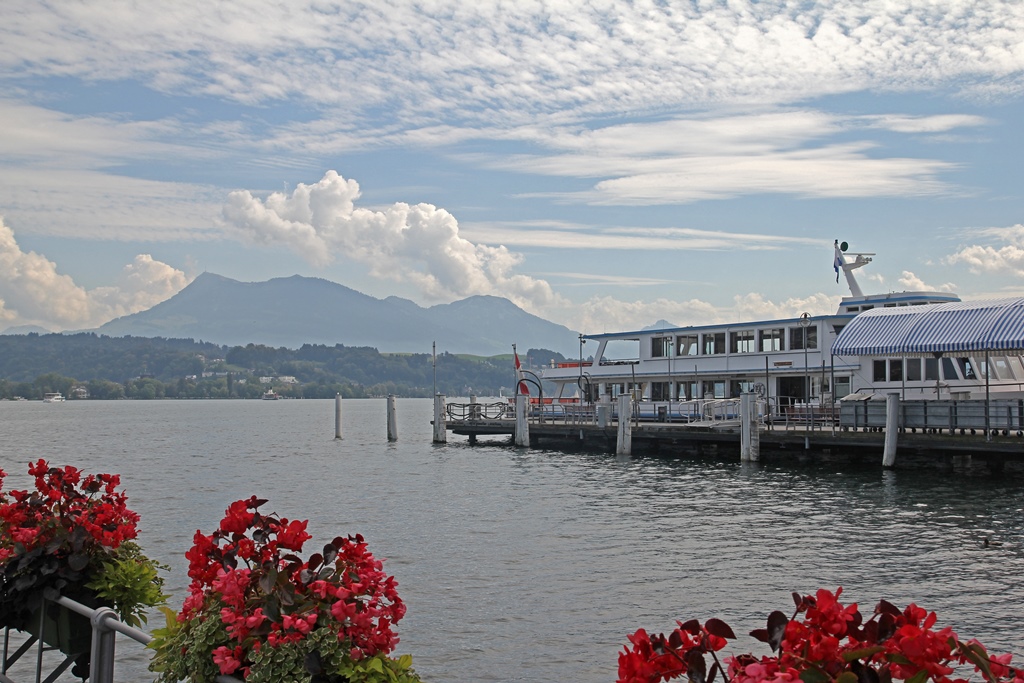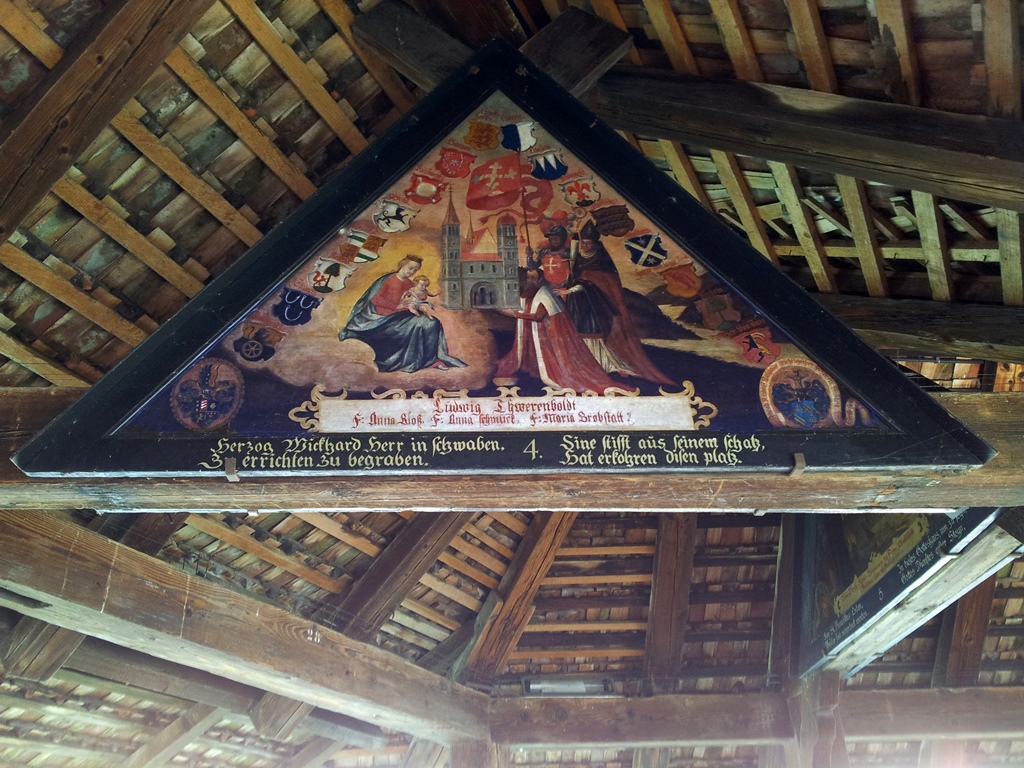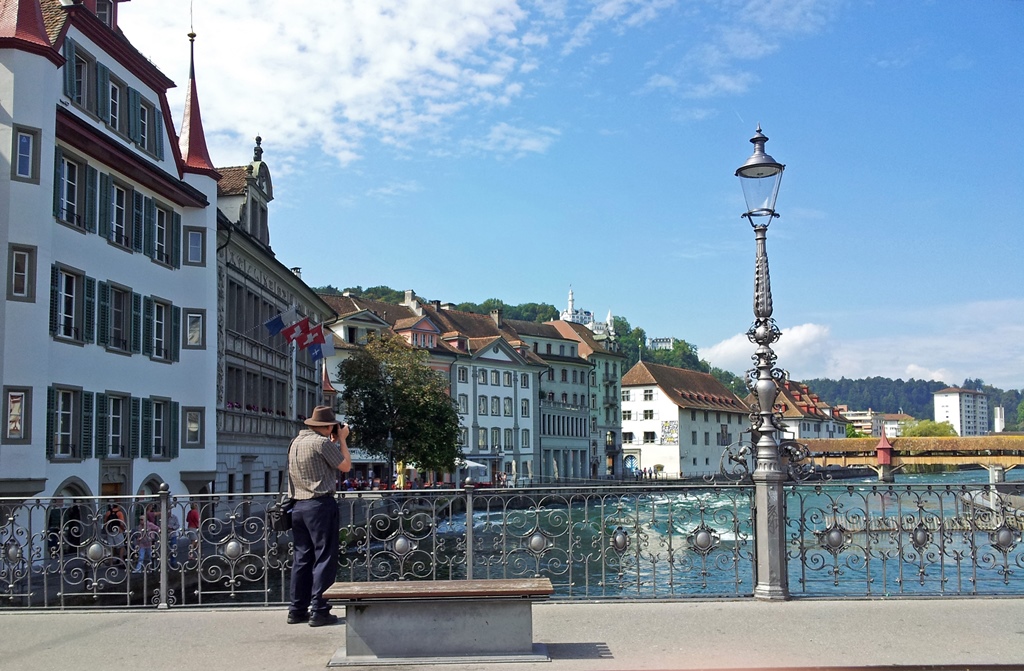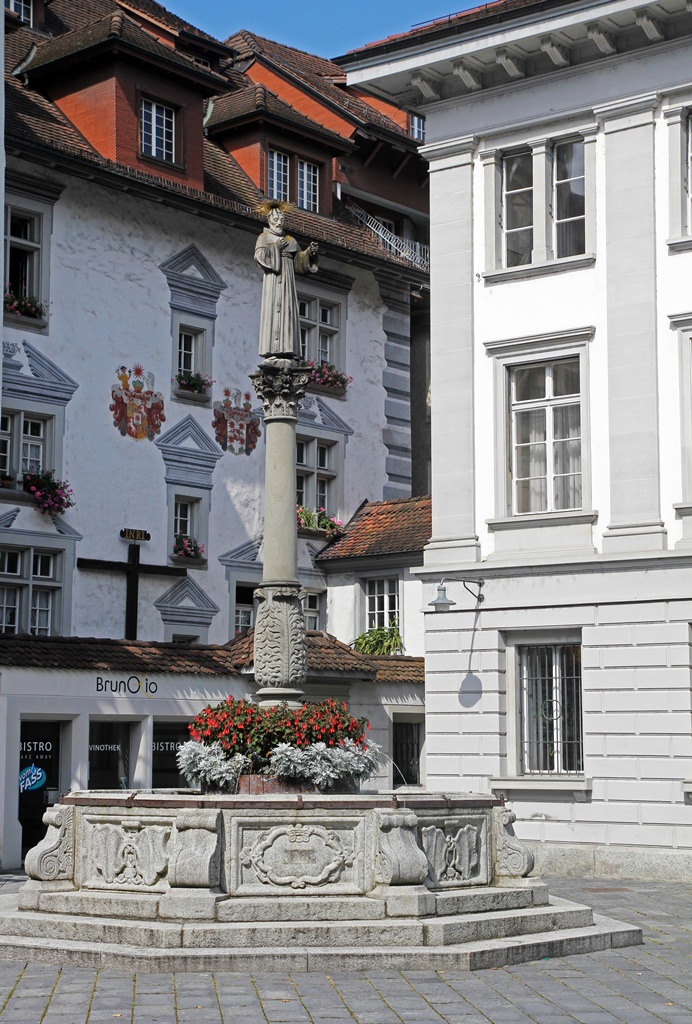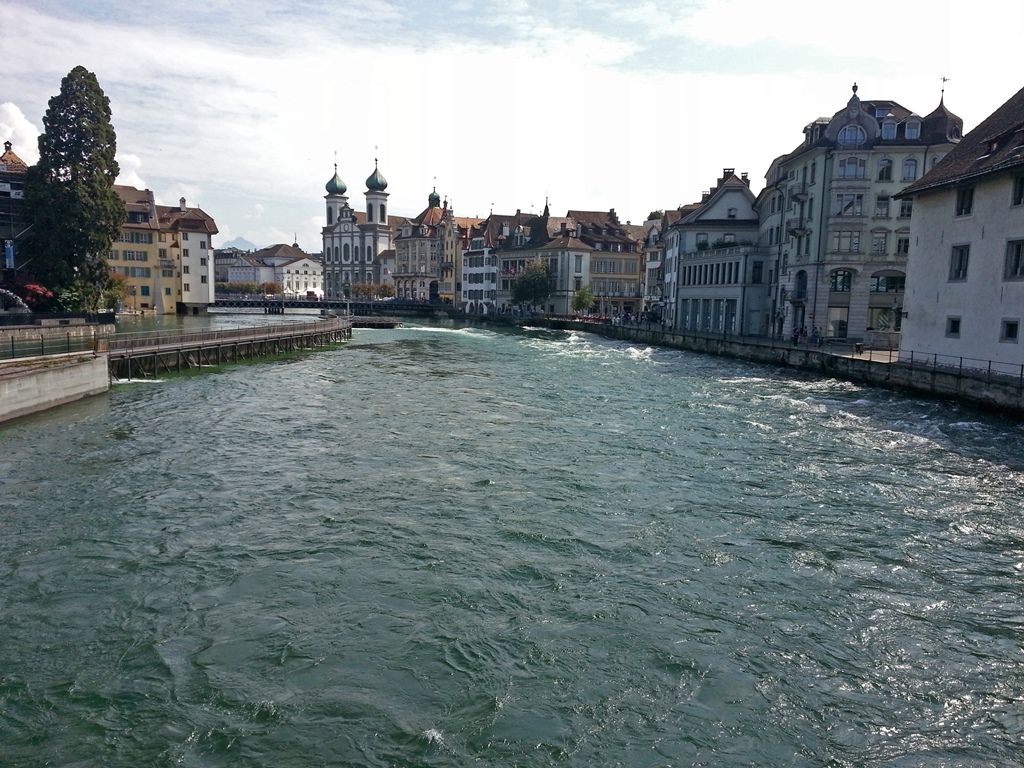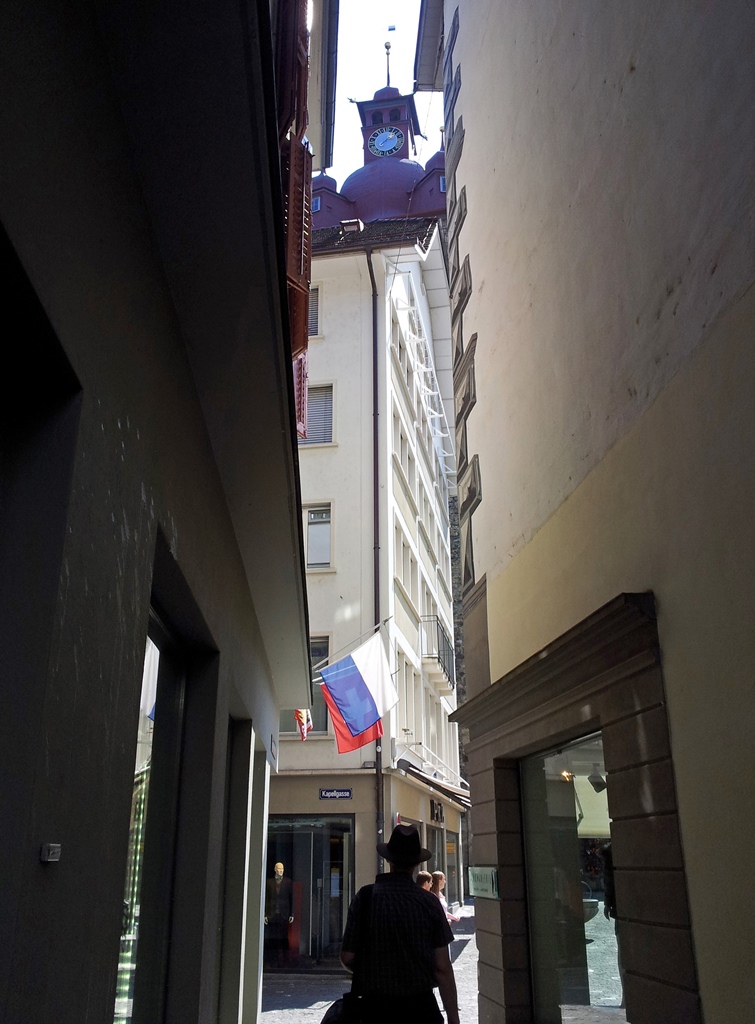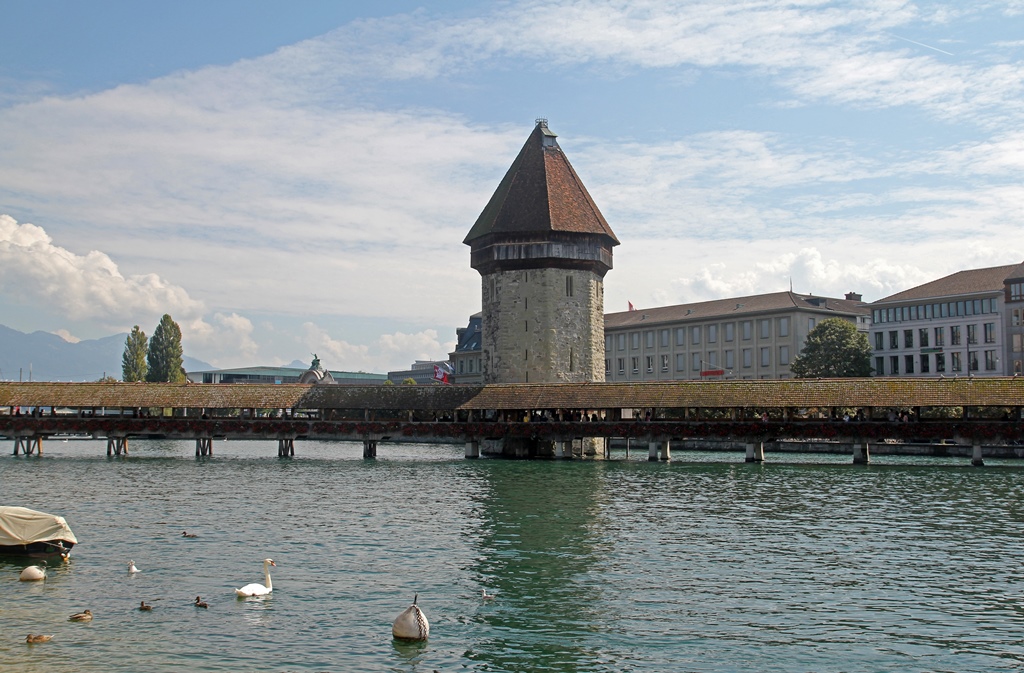Interested in getting out of the big city of Zürich and seeing more of Switzerland, we
decided to take a day trip south to the city of Lucerne, which is smaller and which
appeared to be scenic in pictures we saw on the Internet and in guidebooks. We walked
over to the train station and checked the display in the main hall for the next train
to Lucerne (there are two per hour). We couldn't help but notice a large, chubby blue
angel dangling from the station's rafters. This is a 1997 artwork by the French-American
artist Niki de Saint Phalle, called Guardian Angel (L'Ange Protecteur).
The style seemed distinctive and familiar to us, and might be familiar to you as well.
There are several Saint Phalle works scattered across the world, mainly in Europe and the
U.S. We were mostly reminded of her work on the Stravinsky Fountain in Paris, near the
Pompidou Center. Unfortunately there won't be any more works, as Saint Phalle passed
away in 2002, in La Jolla, California. We headed over to the track where the Lucerne
train could be expected and boarded it when it showed up. The trip to Lucerne took about
an hour.
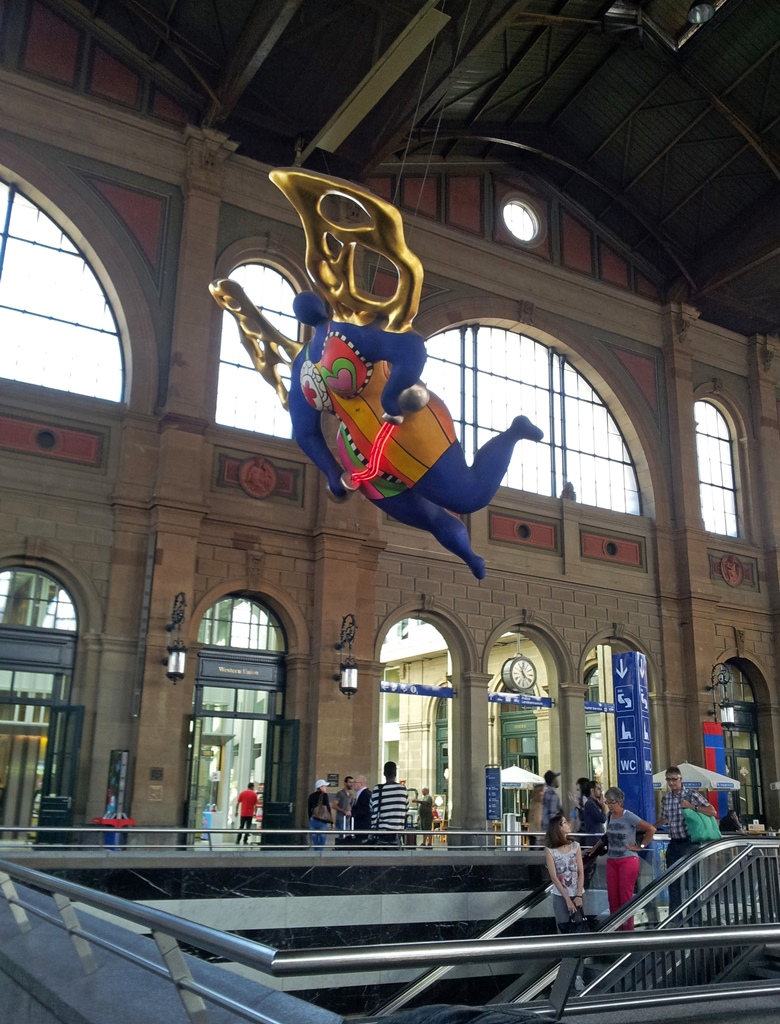
Guardian Angel, Niki de Saint Phalle (1997)
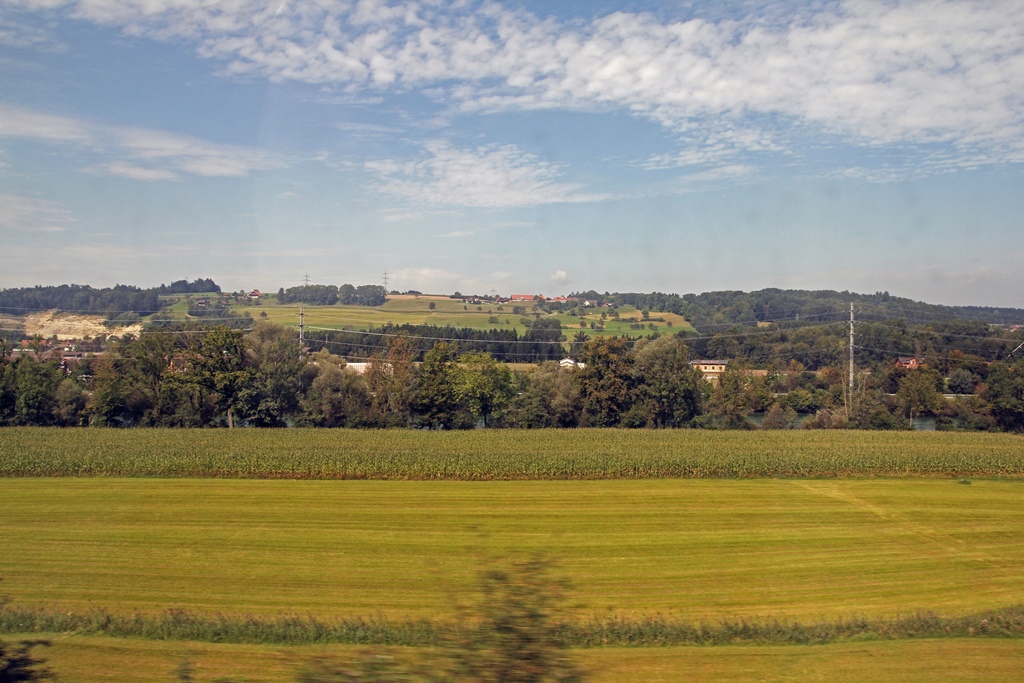
Swiss Countryside from Train
Like Zürich, Lucerne is located on a large lake, at the point where a river flows out from
it. The lake in this case is known in English as Lake Lucerne (in German it's referred to
as the Vierwaldstättersee, or "Lake of the Four Forested Settlements"), and the
river is the Reuss (pronounced "Royce"), which flows to the Aare River, and eventually to
the Rhine.
Lake Lucerne
The city has been there since 1178, when it was officially established on the site
of the Benedictine Monastery of St. Leodegar (founded around 750 by Germanic peoples).
It gained independence from the Holy Roman Empire in 1415 and joined the Swiss
Confederacy (it's presently the capital of the canton of Lucerne). During the
Reformation, many Swiss cities became Protestant, but Lucerne remained Catholic, and
remains predominantly Catholic to the present day. As of 2016, the city's population
was about 81,500, and its urban area, consisting of Lucerne and towns both north and
west of the lake, has a population of around 250,000 people.
Central Lucerne
Lucerne has a pretty big train station, which is located on the south side of the
Reuss, where the lake empties into it. Next to the station, on the lakeshore side,
is a large building, called the Kultur- und Kongresszentrum Luzern (or KKL),
a concert venue which opened in 1998.
Kultur- und Kongresszentrum Luzern
From the station, we walked over to the waterfront, to a point where we could
see across the Reuss to the other side, and where we could also see out into
the lake.
Mountains and Boat from Waterfront
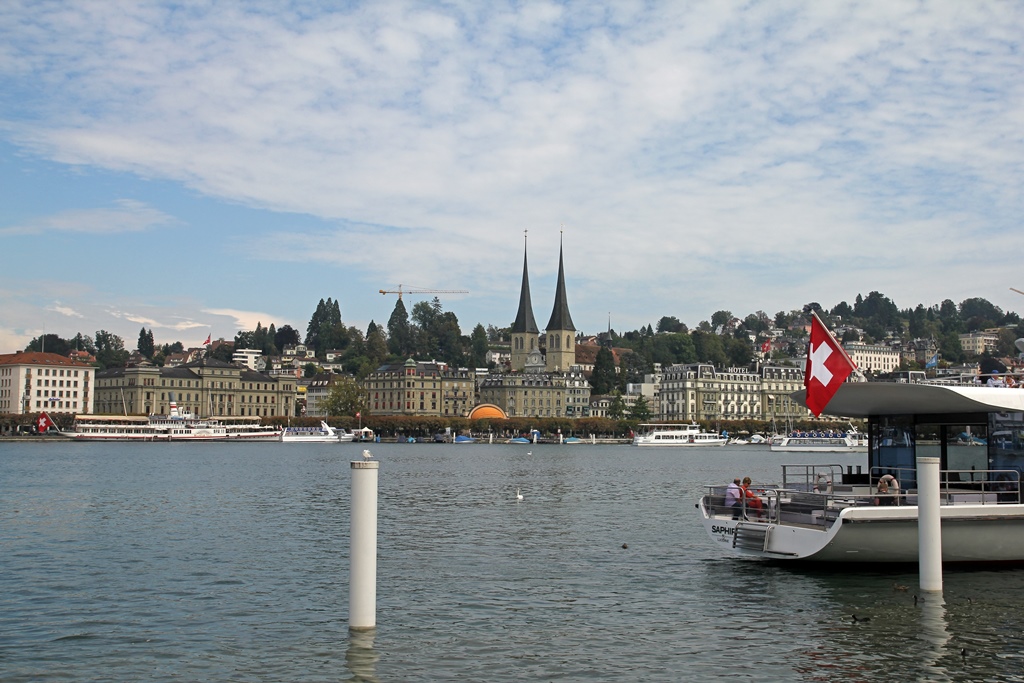
Hofkirche St. Leodegar and National Hotel
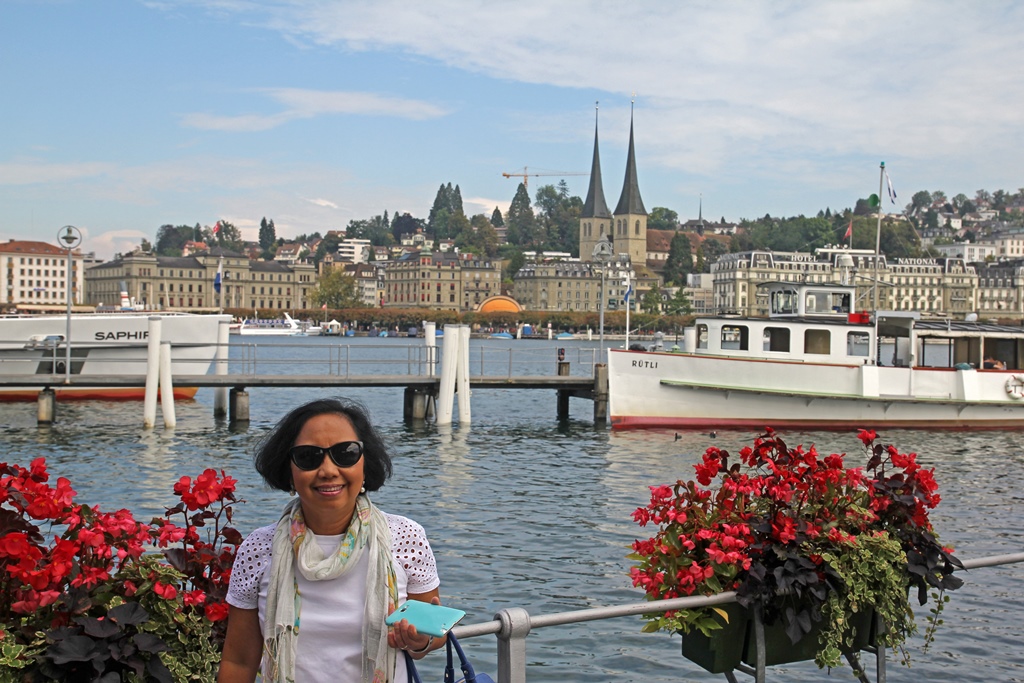
Nella at Waterfront
Looking back toward the train station, we could see a disembodied archway in the
middle of the open area in front of the station. Apparently this is all that's left
of a train station that occupied the area from 1896 until 1971, when it burned down.
The present station opened in 1991.
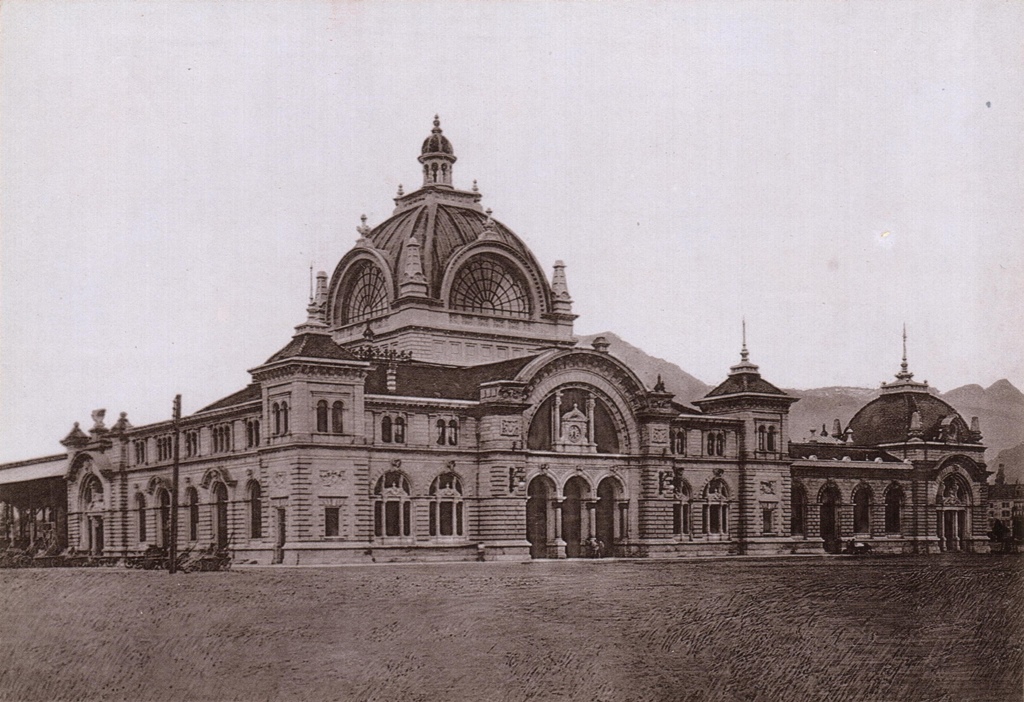
1896 Train Station
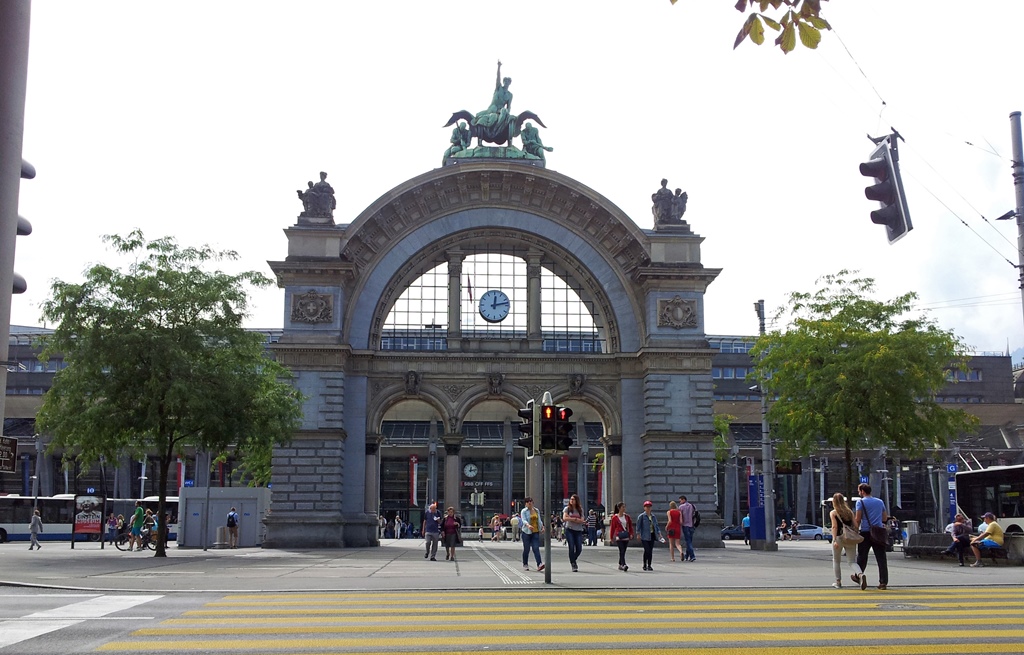
Arch from Old Train Station
Probably more interesting is the scenery along the Reuss, starting with the Chapel
Bridge, or Kapellbrücke. The Kapellbrücke was originally built around 1365,
as part of the city's fortifications. It's the oldest covered bridge in Europe and
the oldest surviving truss bridge (made from connecting triangular elements) in the
world. It's 672 feet long and supplies a pedestrian-only connection between the
banks of the river. Adjacent to the bridge is the 113-foot-tall Wasserturm,
or Water Tower, which is 30 years older than the bridge. It's not called the
"Water Tower" because it contains water, but rather because it's standing in a river.
It's closed to the public, but has been used as a prison, a torture chamber and a
municipal archive over the centuries. Along the bridge, in the rafters under the
roof, there is a series of triangular paintings depicting events from the city's
history, dating back to the Counter-Reformation. Unfortunately, a 1993 fire
destroyed two-thirds of the original paintings.
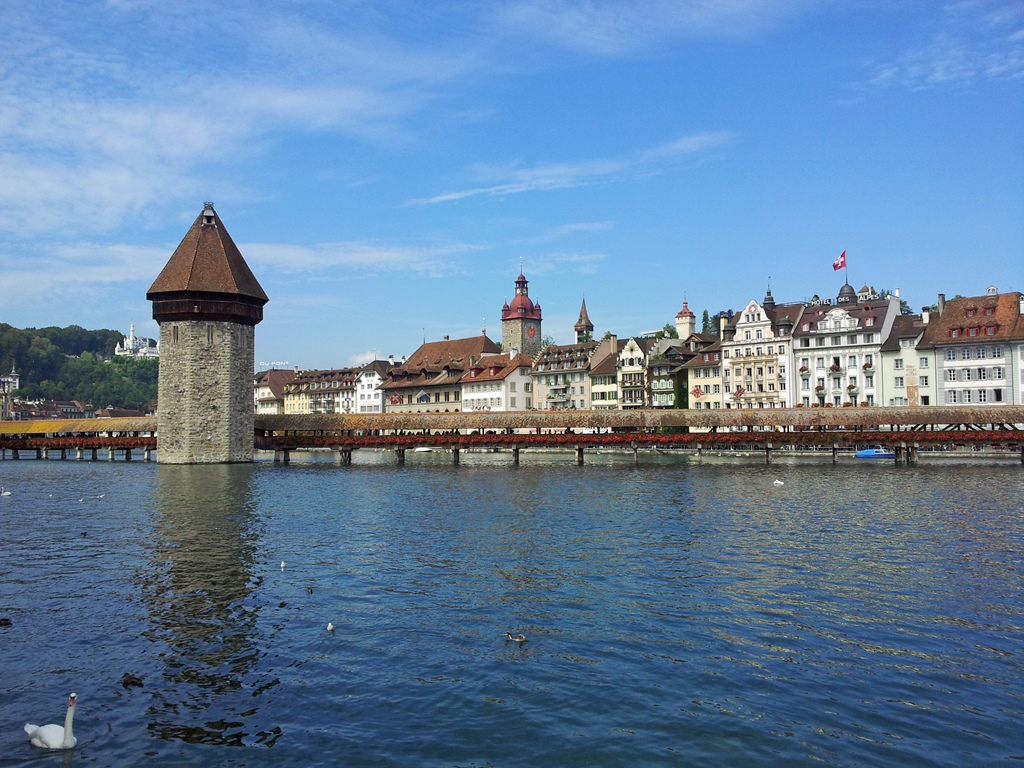
Kapellbrücke and Wasserturm
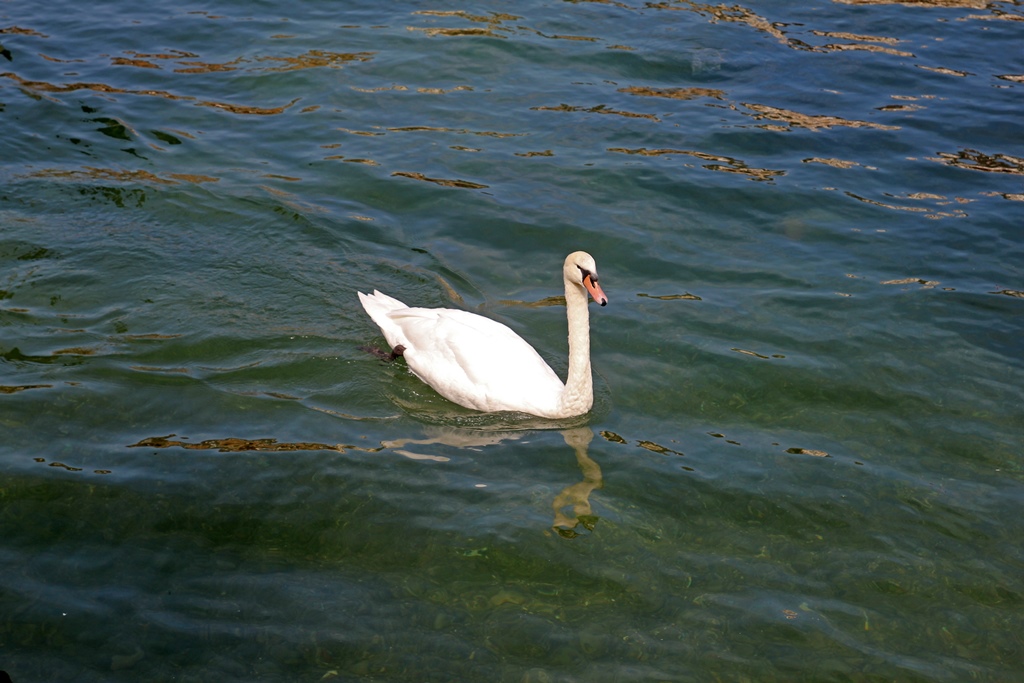
A Swan
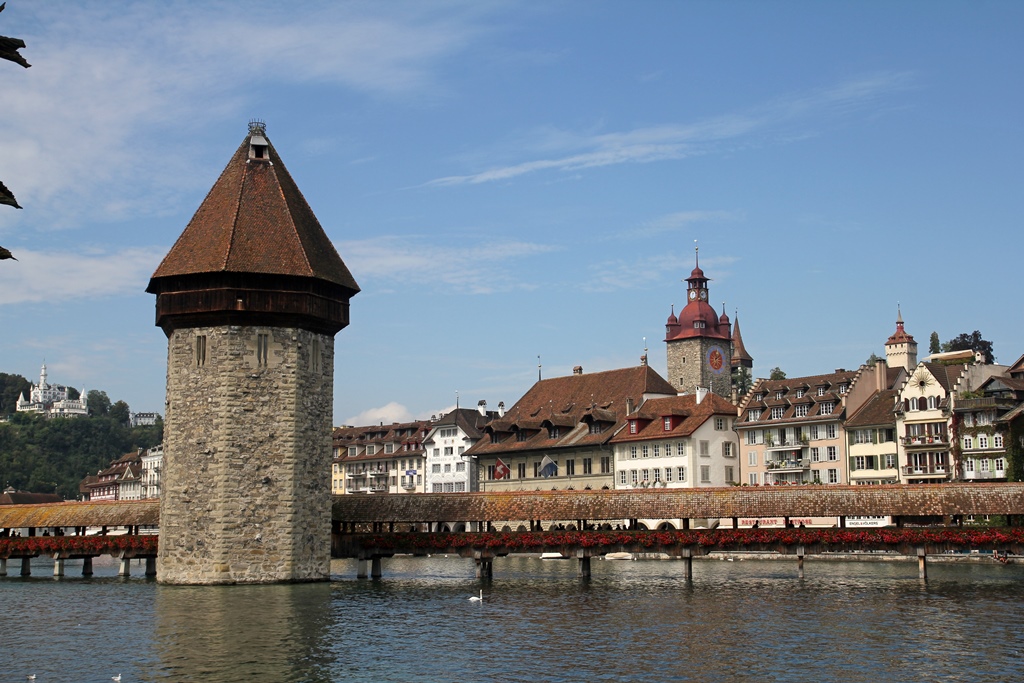
Kapellbrücke and Wasserturm
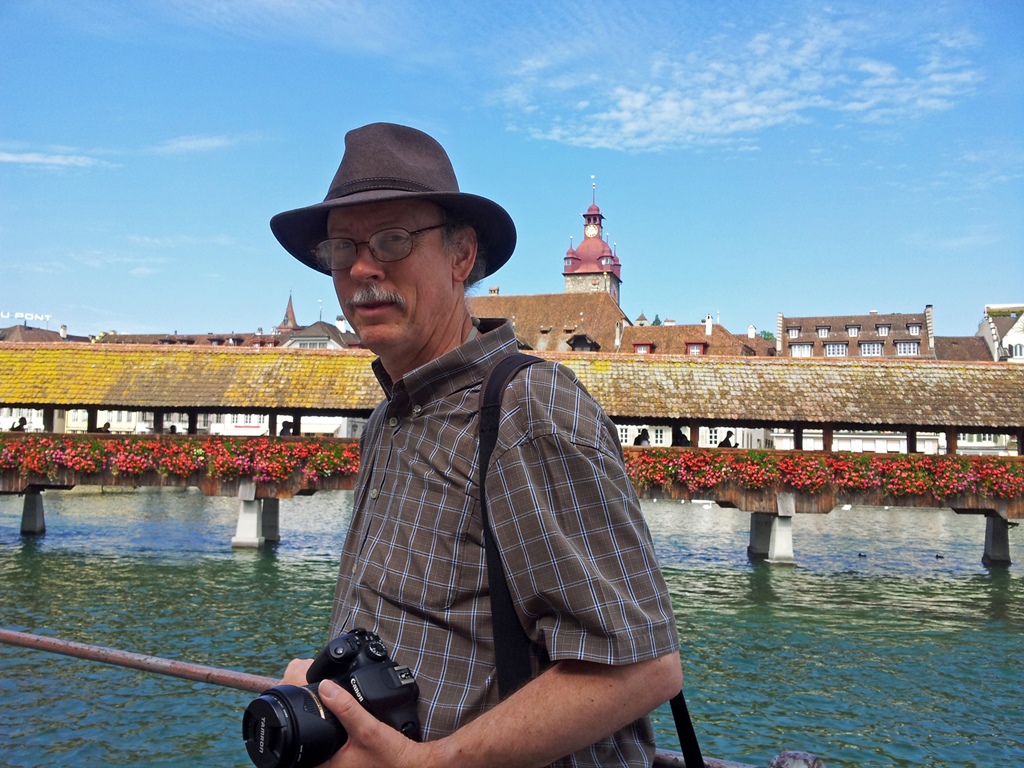
Bob and Kapellbrücke
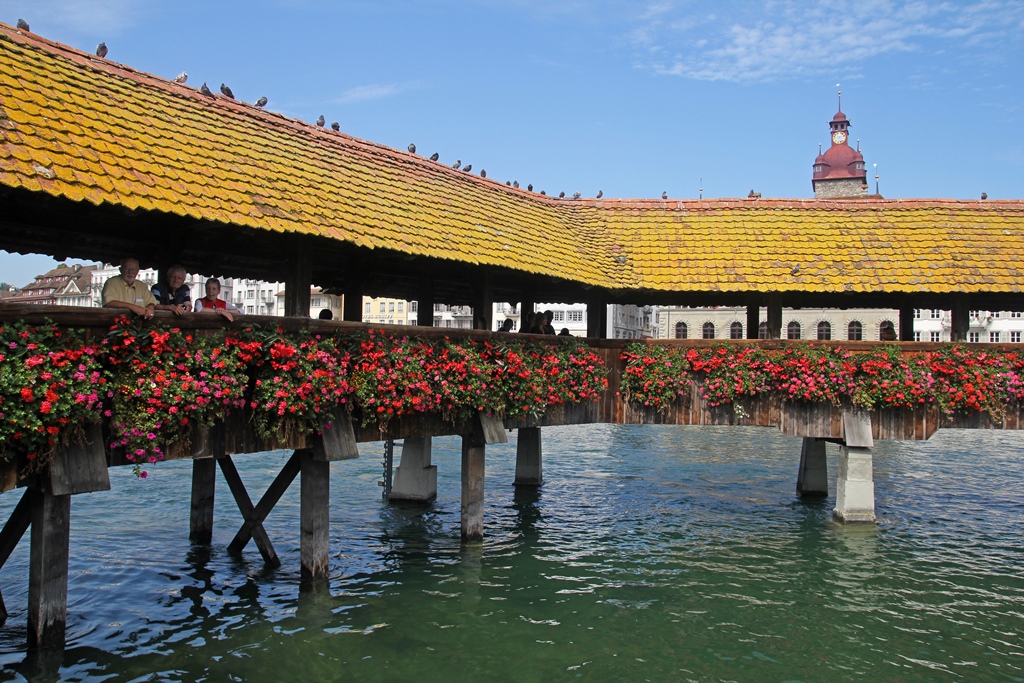
Kapellbrücke
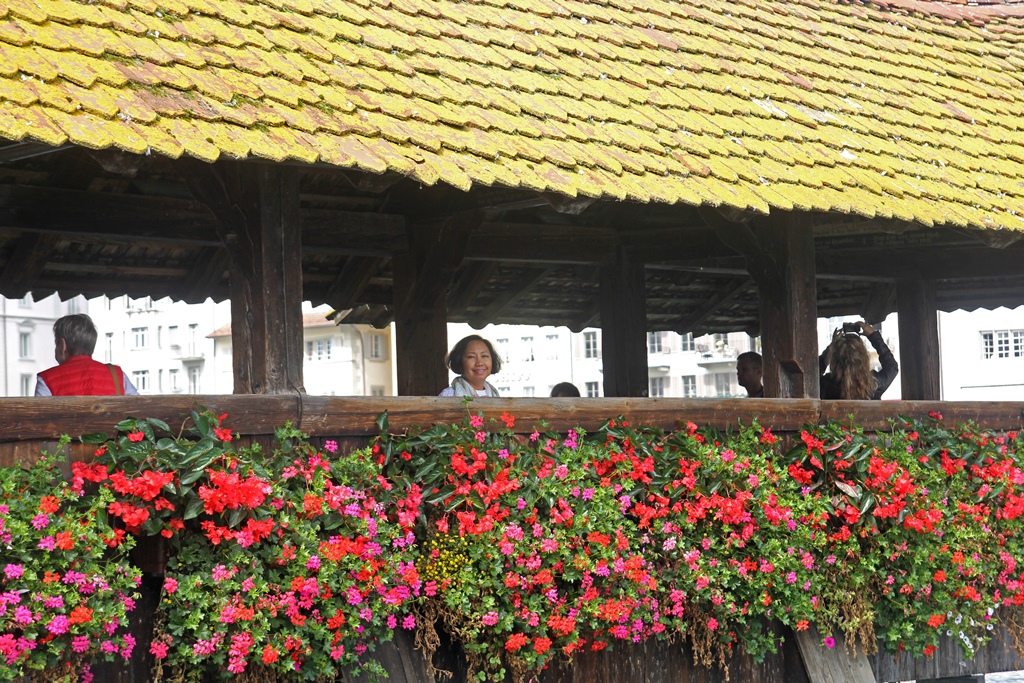
Nella on Kapellbrücke
Rafter Painting
We didn't cross the river at this time, continuing along the south bank. There
were additional footbridges.
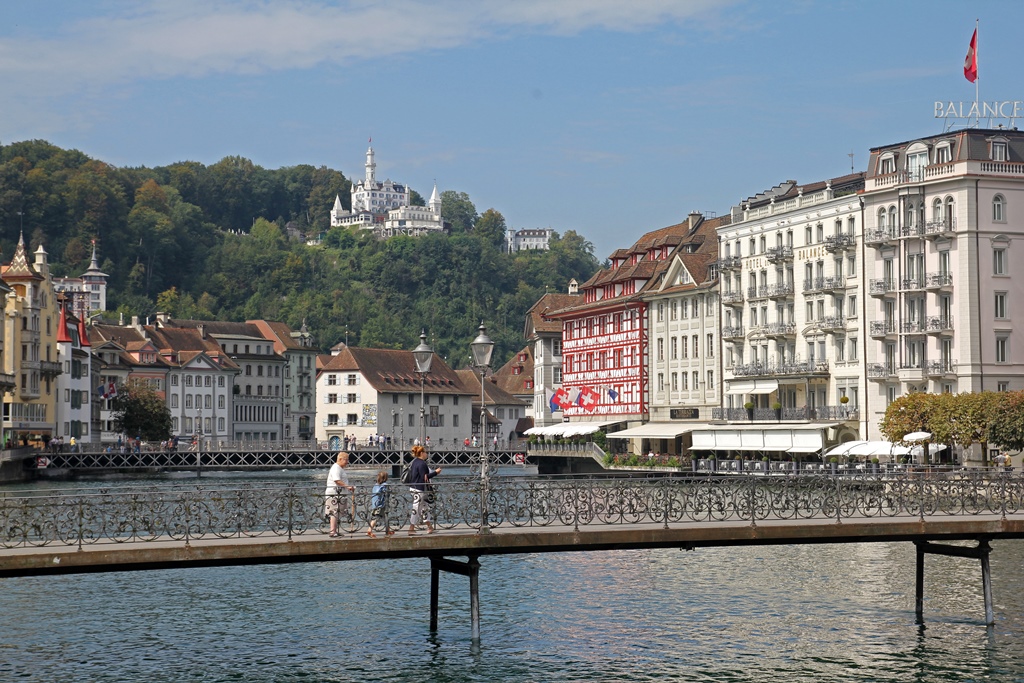
Hotels, Footbridges and River Reuss
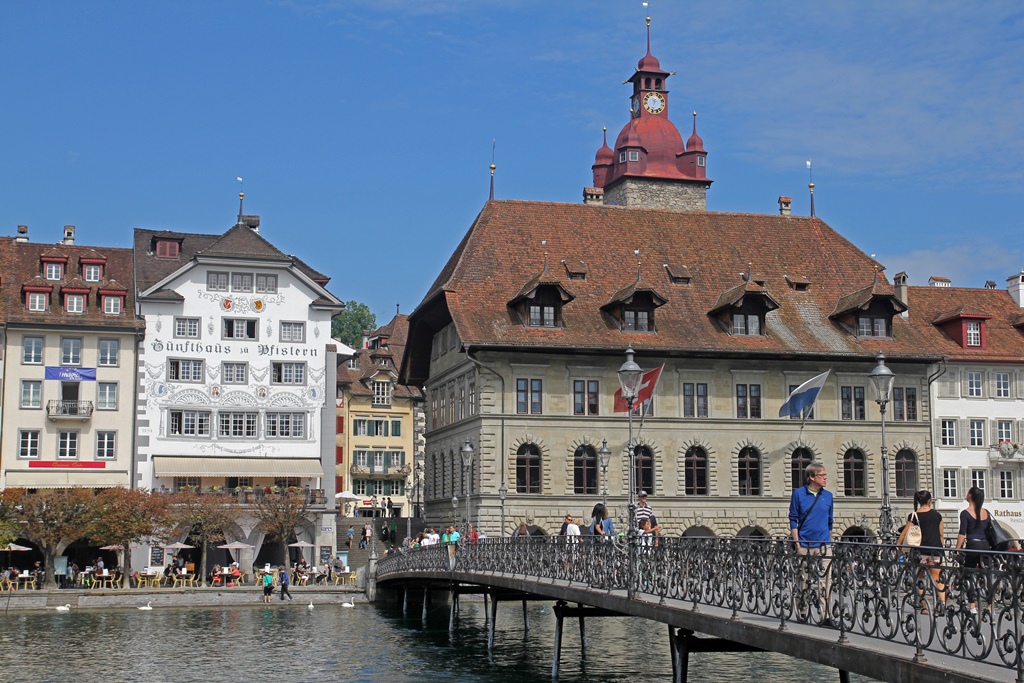
Footbridge and Riverfront Buildings
Continuing along the south bank, we came to the Jesuit Church, or Jesuitenkirche.
Construction on this church began in 1667, and it was consecrated in 1677. It was the
first large baroque church built in Switzerland. We went in to have a look.
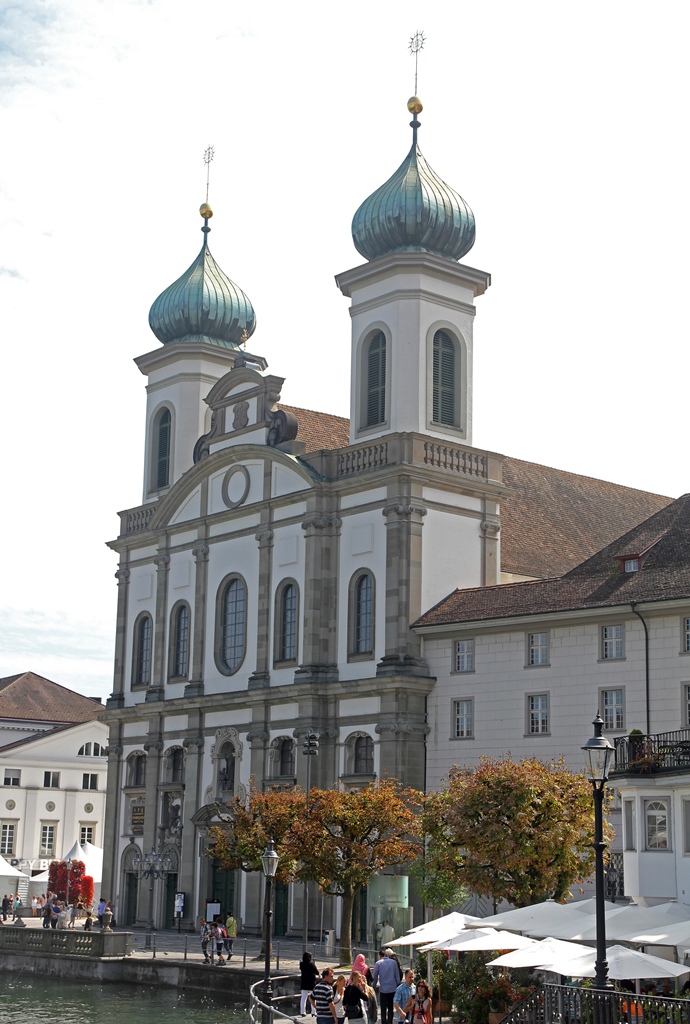
The Jesuitenkirche
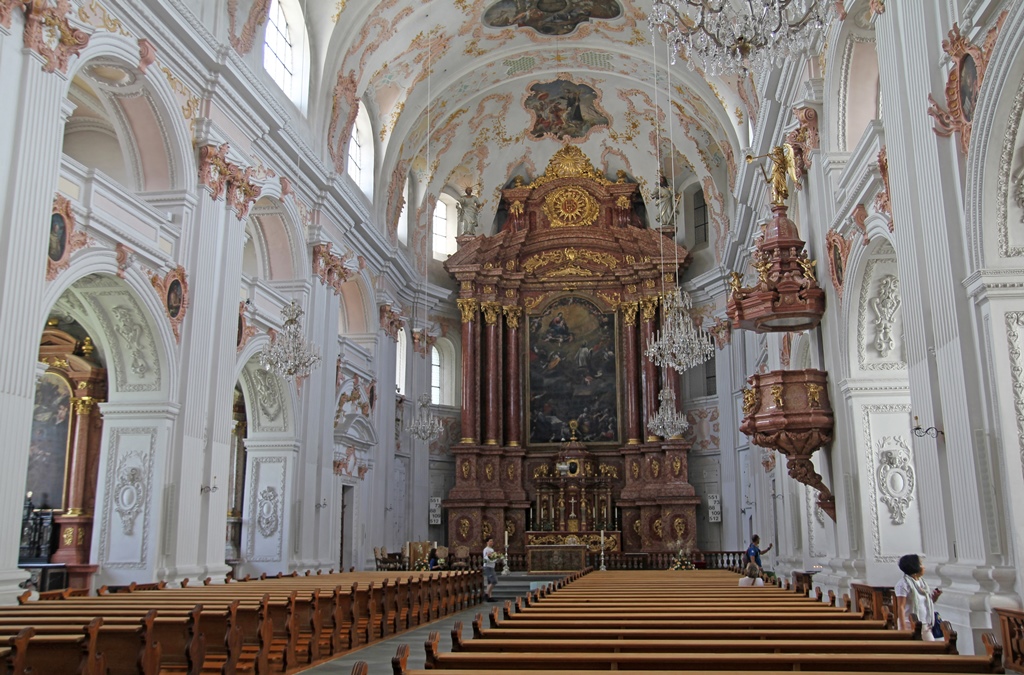
Inside the Jesuitenkirche
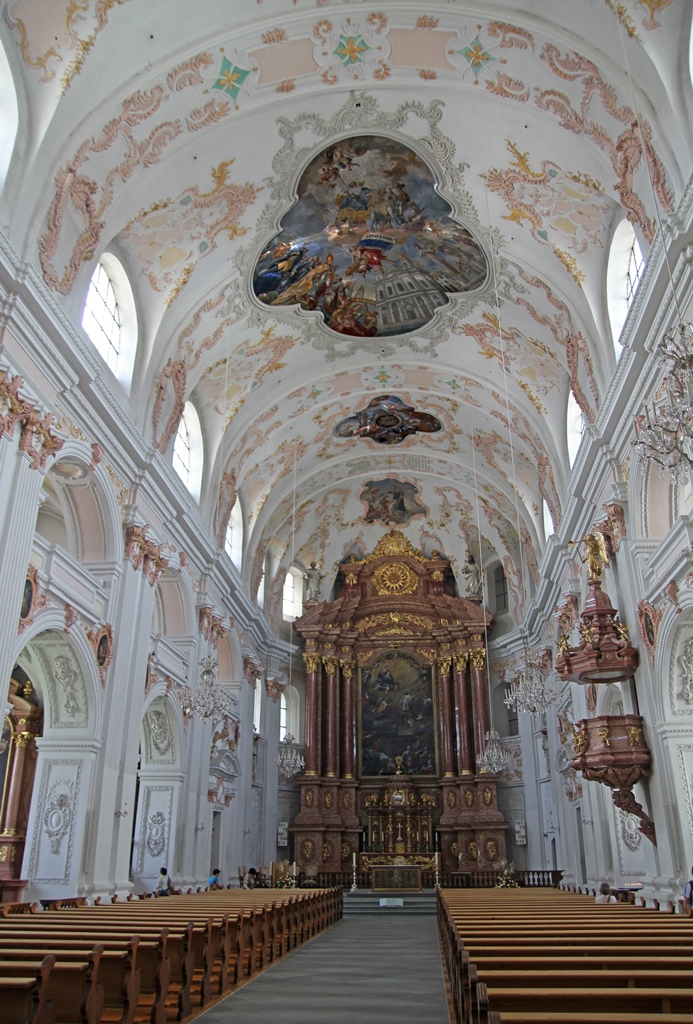
Inside the Jesuitenkirche
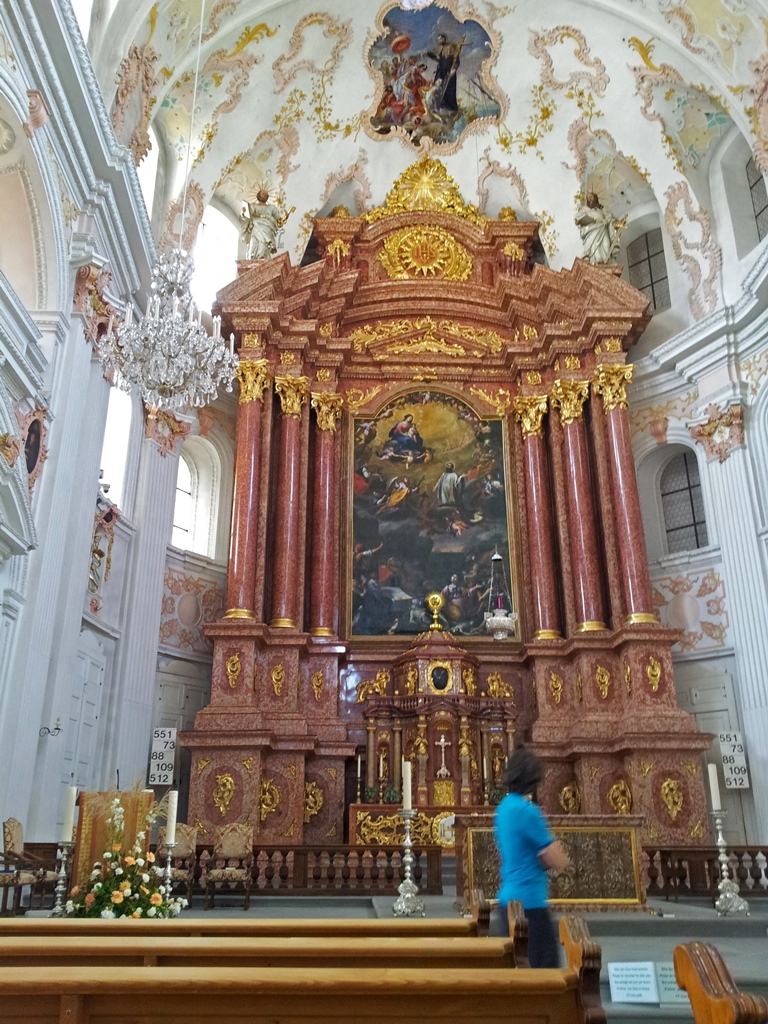
Main Altar
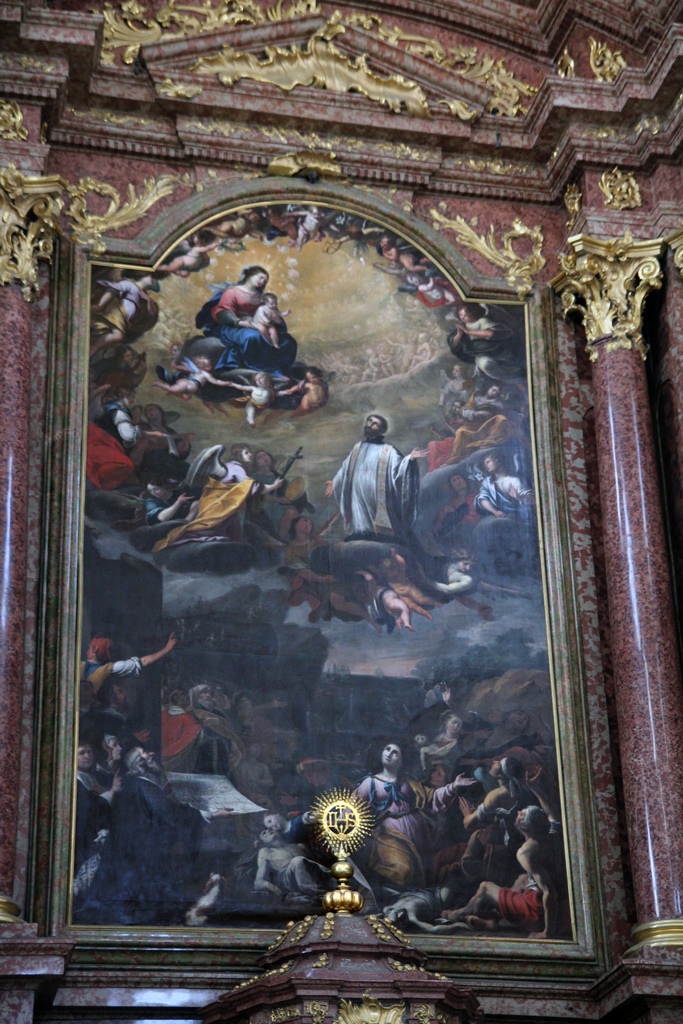
Main Altar Painting - St. Francis Xavier, Torriani
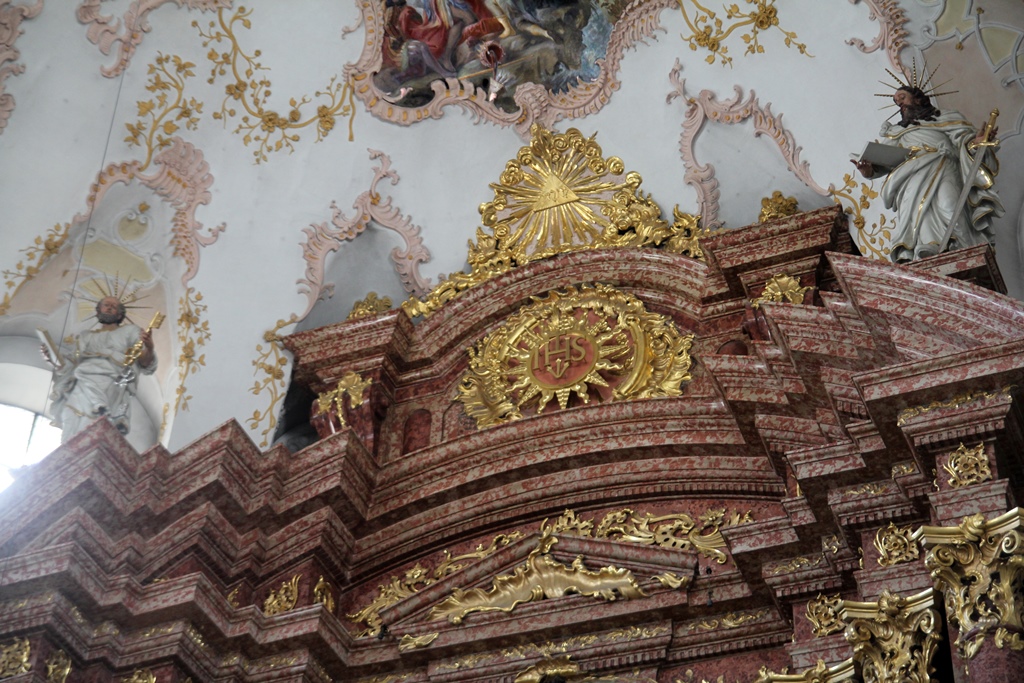
Top of Main Altar
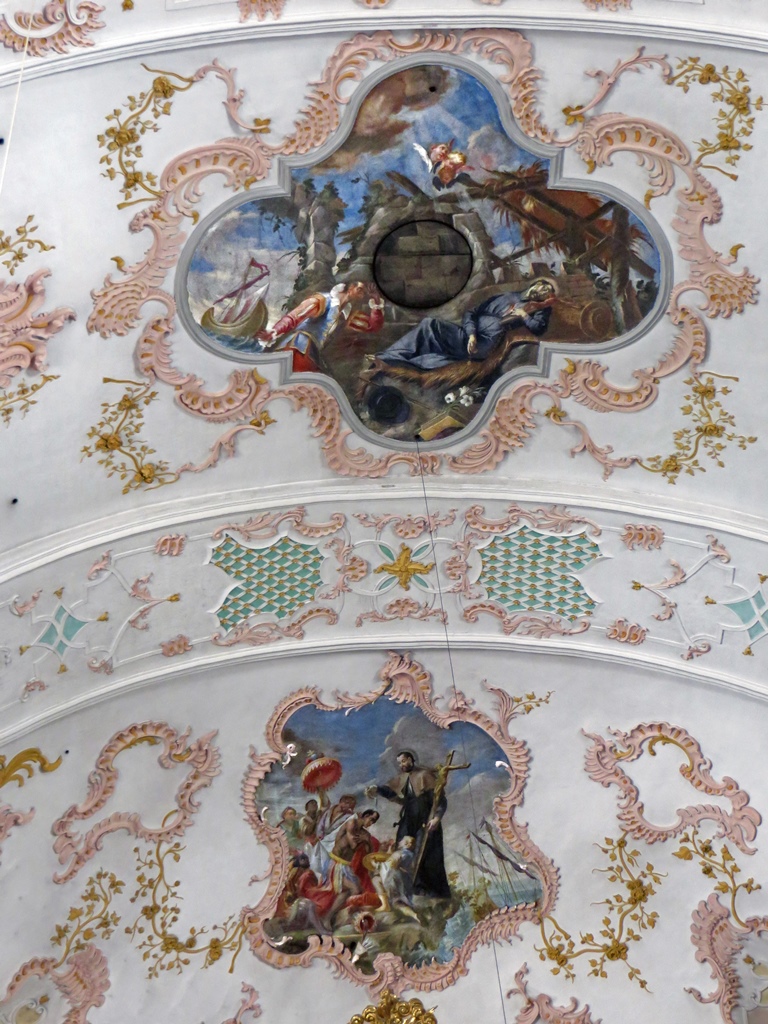
Ceiling Frescoes - St. Francis Xavier
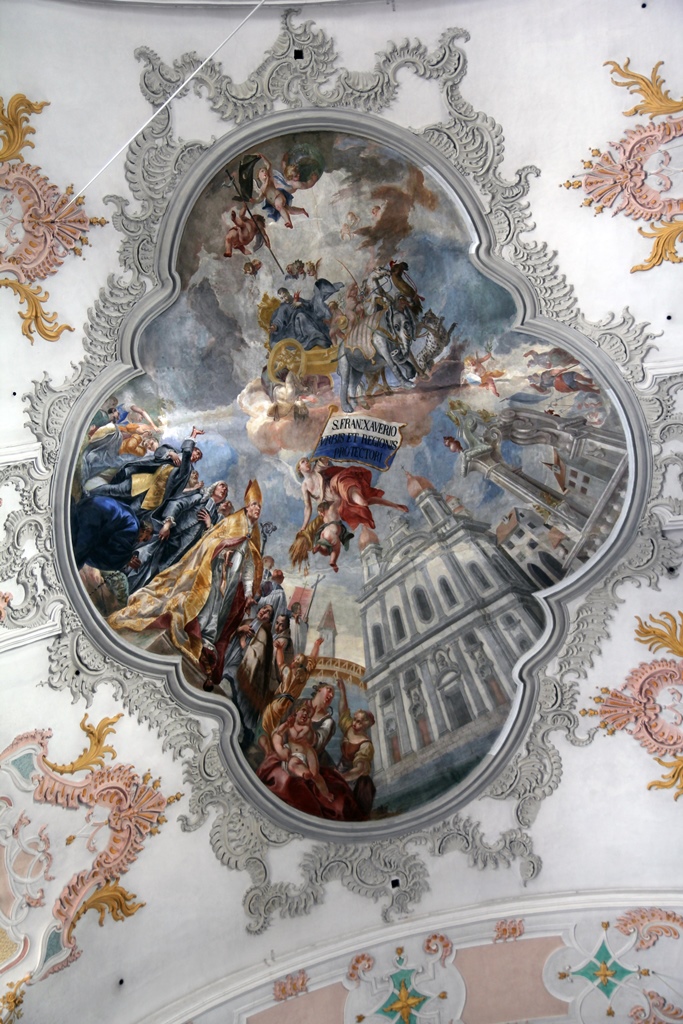
Ceiling Fresco - The Glory of St. Francis Xavier
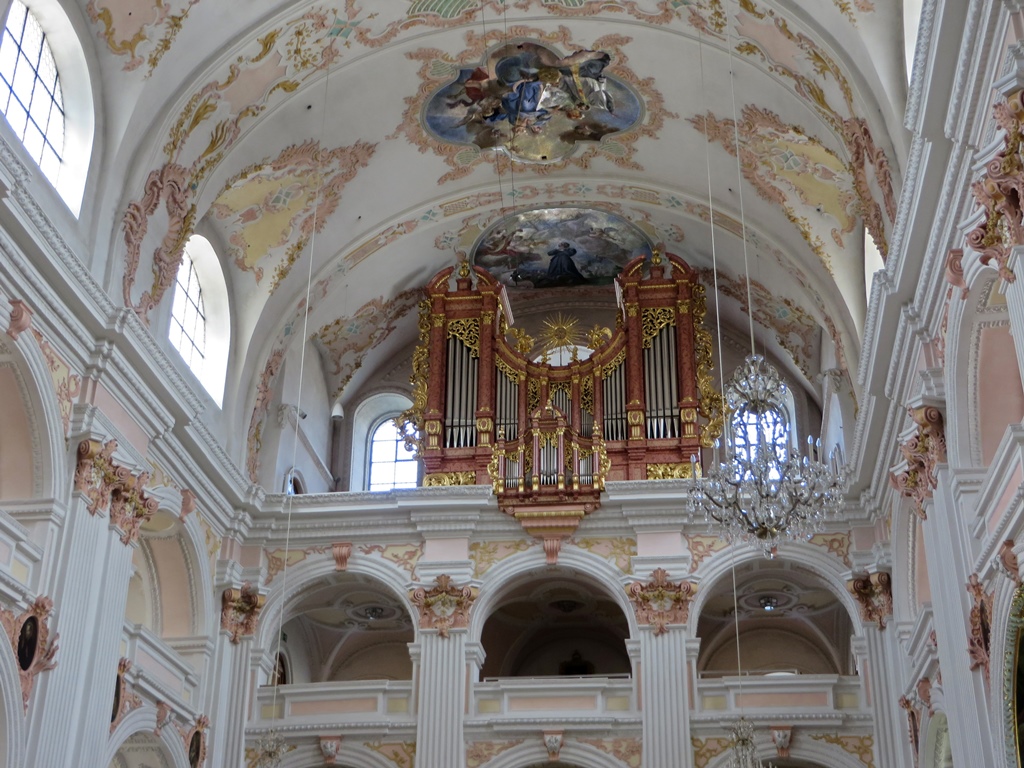
Church Organ (1982)
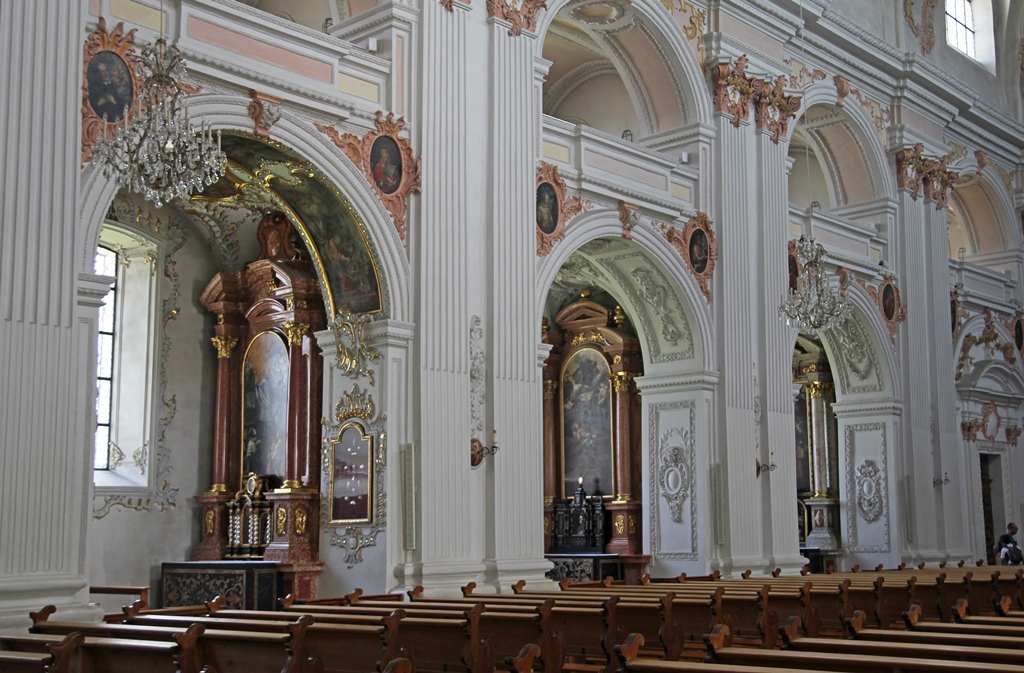
Side Altars
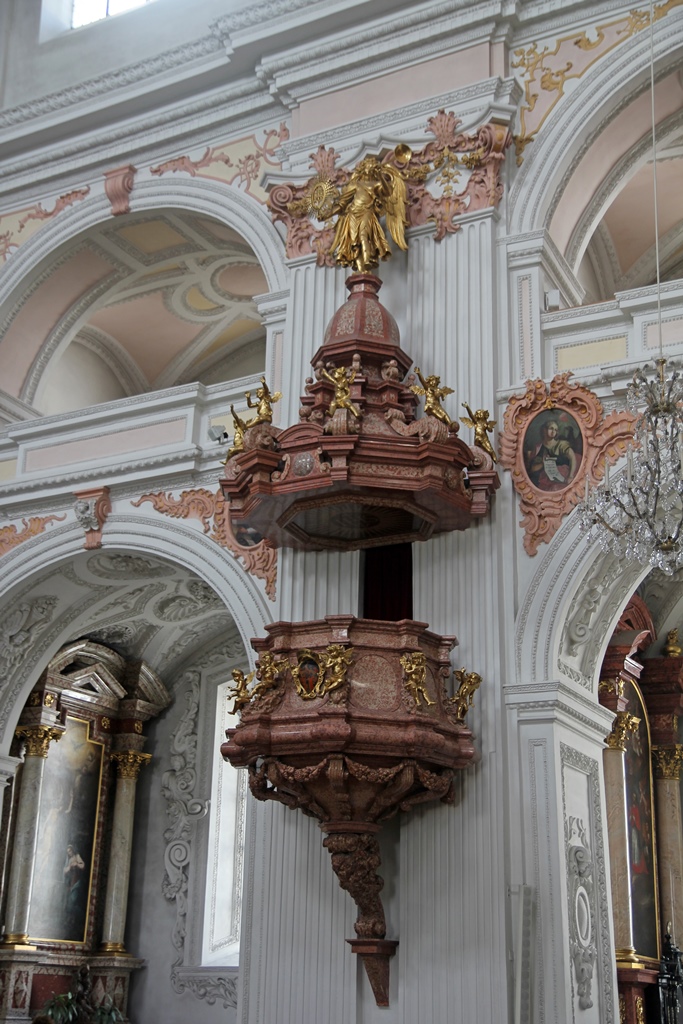
Pulpit
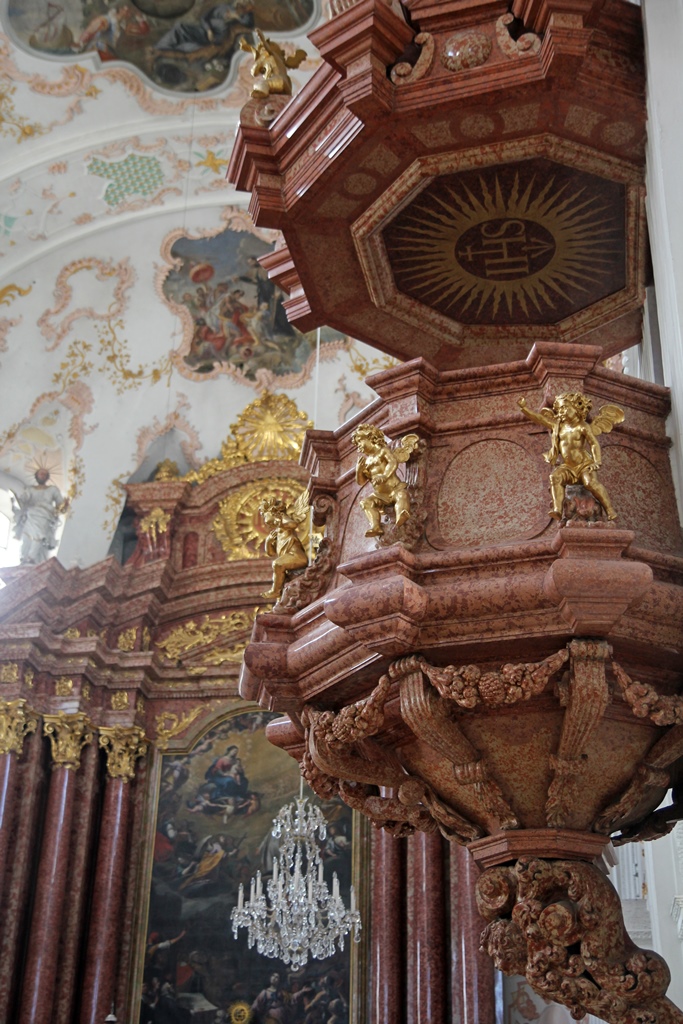
Pulpit
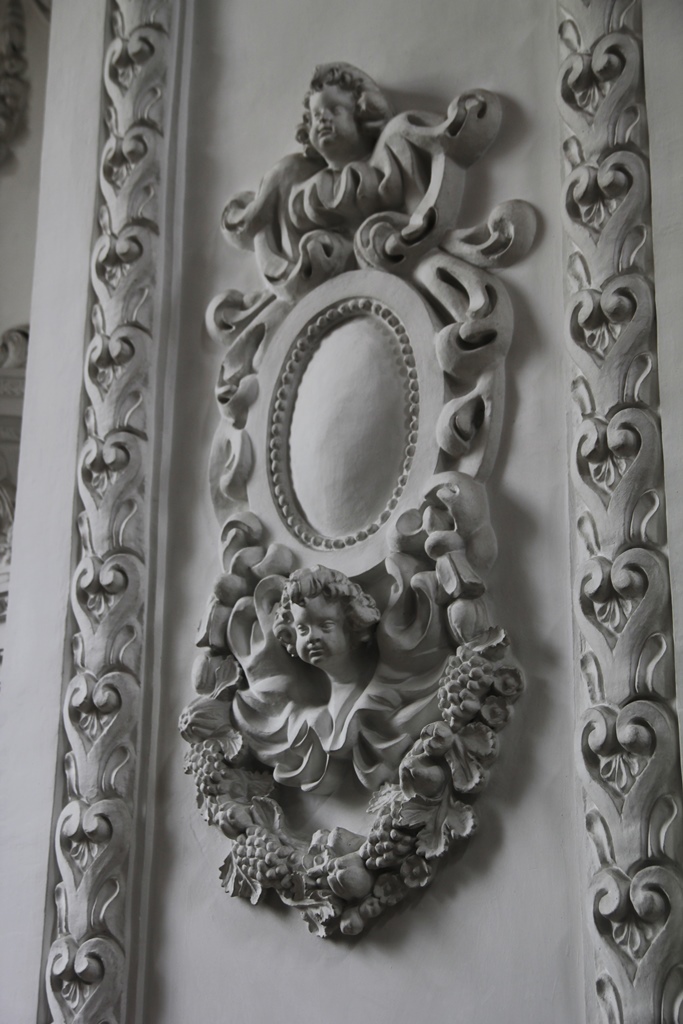
Baroque Decoration
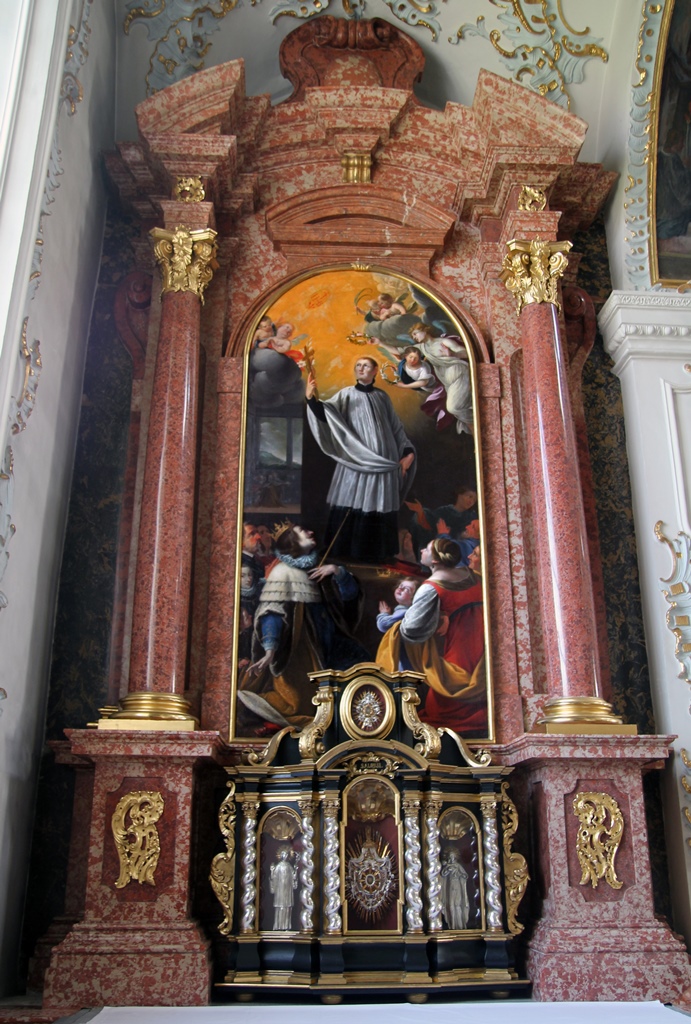
St. Aloysius Chapel
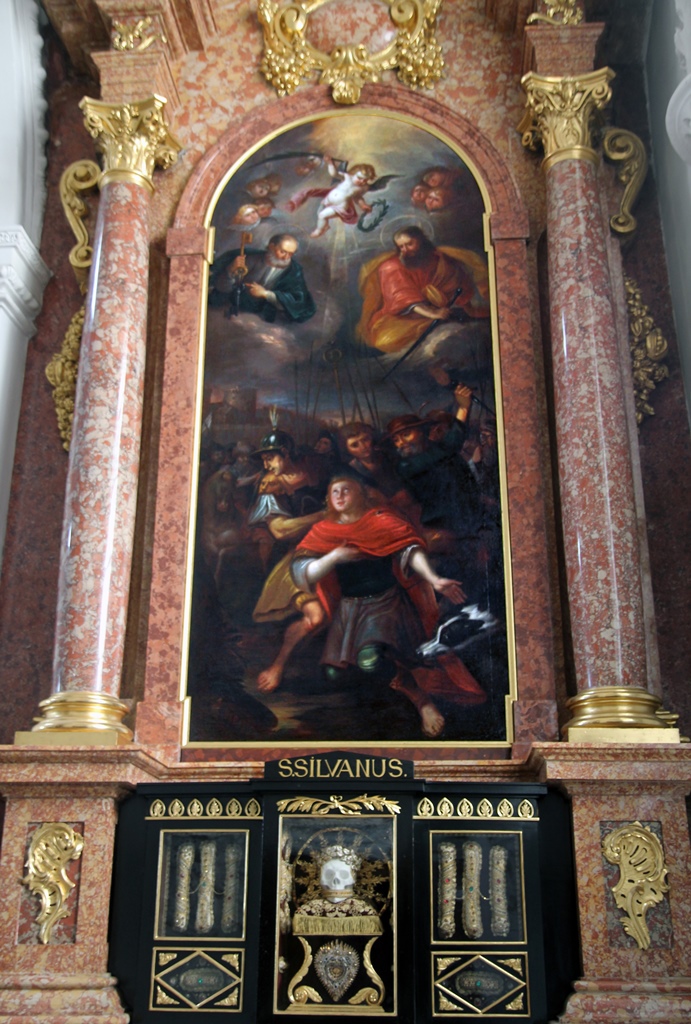
St. Silvanus Chapel
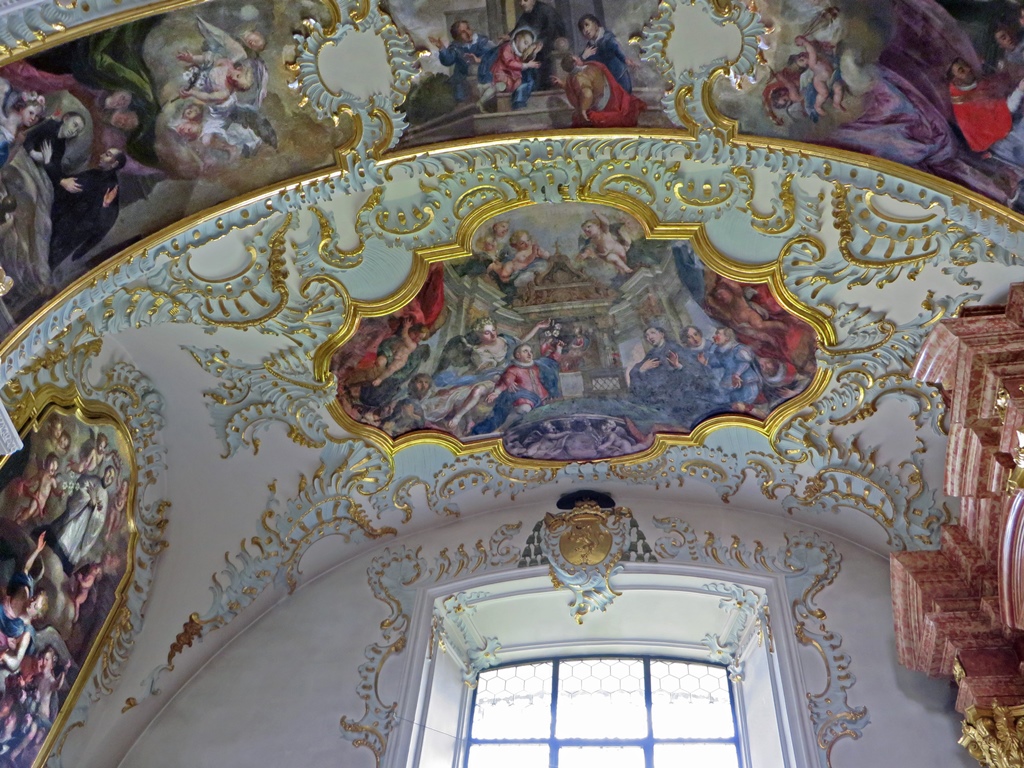
Side Chapel Painting
Downriver a short distance from the church, there was another bridge across the
river called the Reussbrücke. Looking back toward the lake, there was a
nice view of riverfront Lucerne and of the Kapellbrücke.
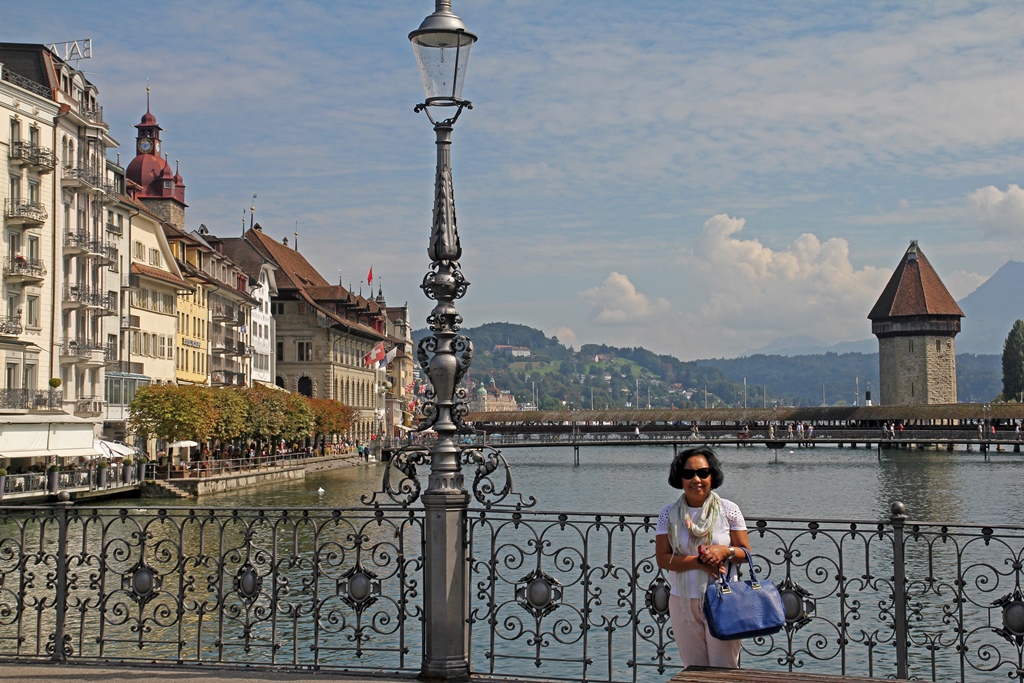
Nella, Kapellbrücke, Wasserturm and River Reuss

View from Reussbrücke
Downstream from the Reussbrücke, there was yet another footbridge across the river,
this one called the Spreuerbrücke (more on this bridge later). But between
the two bridges there is an odd-looking arrangement of wood, metal and concrete
that appears to be somehow channeling the water for some less-than-obvious purpose.
This contrivance is called the Nadelwehr, or Needle Dam. Its purpose is to
maintain the proper level of water in Lake Lucerne – all 44 square miles of it!
Prior to the introduction of the dam in 1860, there were problems along the
lakeshore with flooding at times and with low water levels at others. The dam
works by channeling the lake's outflow between several wooden slats (or needles)
which can be added to or reduced as needed. There is also an element of the dam,
added later, which generates hydroelectric power.
Bob Photographing River
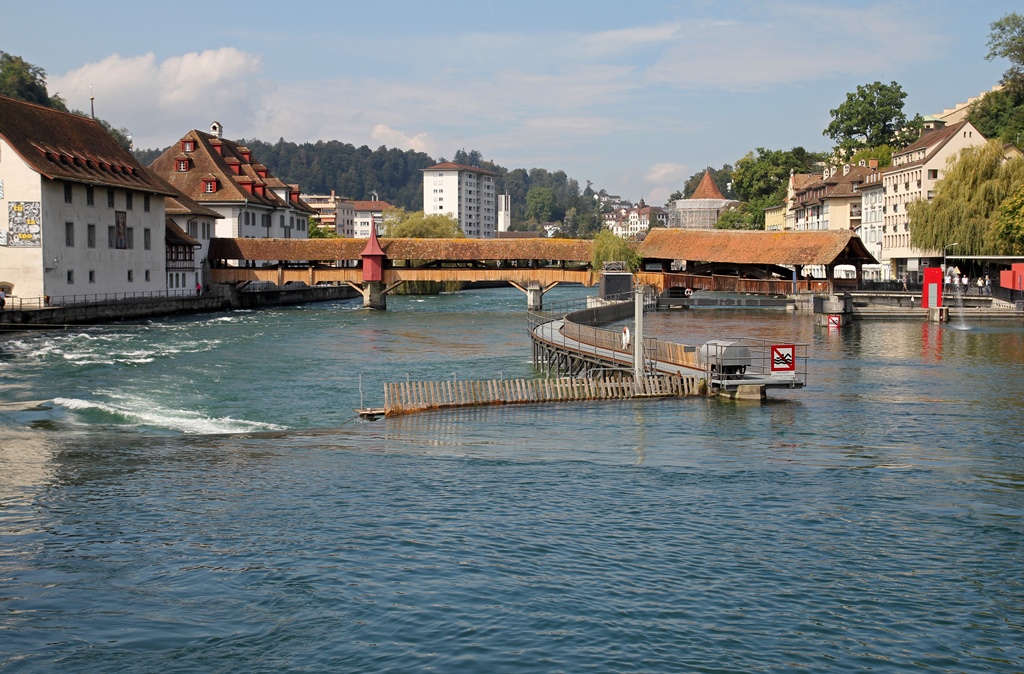
River Reuss Downstream from Reussbrücke

"Needle Dam" and Spreuerbrücke from Reussbrücke
From the Reussbrücke we walked away from the river a little to have a look at
another church, the Franciscan Church (or Franziskanerkirche). Outside
the church there was a small square, called the Franziskanerplatz, which
had a fountain. There was an interesting old car parked by the church, possibly
to be used as part of a wedding to occur later in the day. The car turned out
to be a Fiat Topolino.
Fountain, Franziskanerplatz
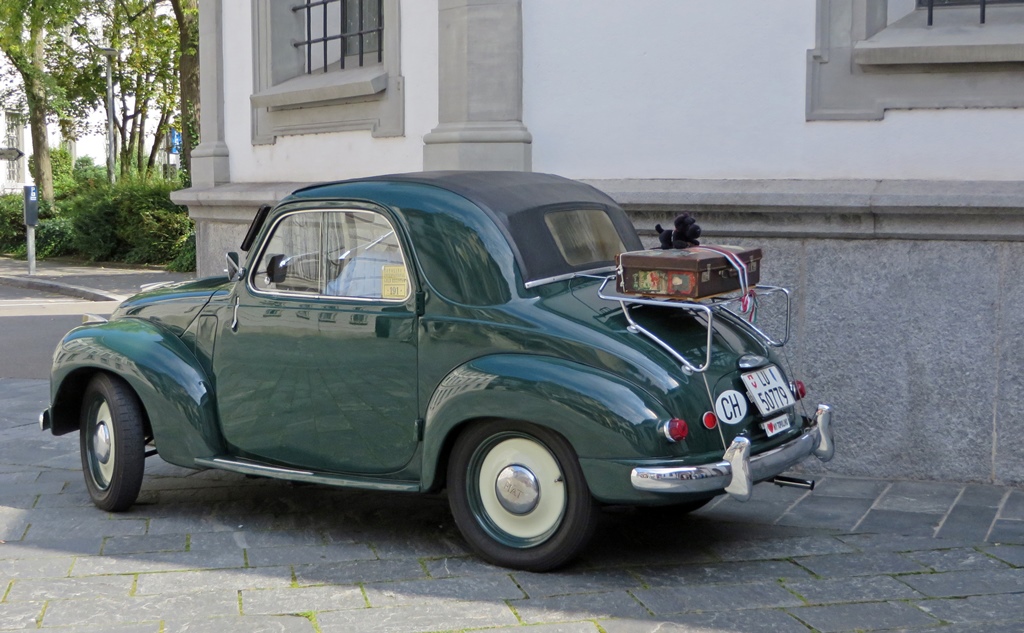
Fiat Topolino Outside Franziskanerkirche
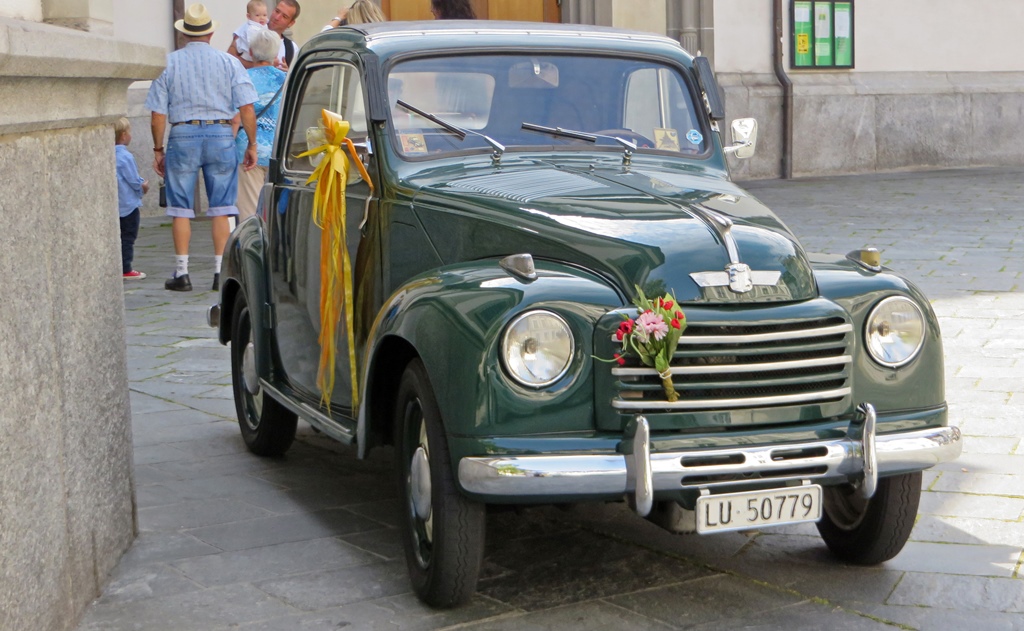
Fiat Topolino Outside Franziskanerkirche
The wedding wasn't happening yet, though, so we went into the church to have
a look around. The church was first built in the 13th Century, but it's
been undergoing continuous renovation ever since. As a result, architectural
elements remain from the Gothic, Renaissance and Baroque eras. There are
flags painted along the upper walls of the nave, representing accomplishments
of 17th Century Swiss mercenaries. The pulpit was created in the 15th
Century and is startlingly ornate.
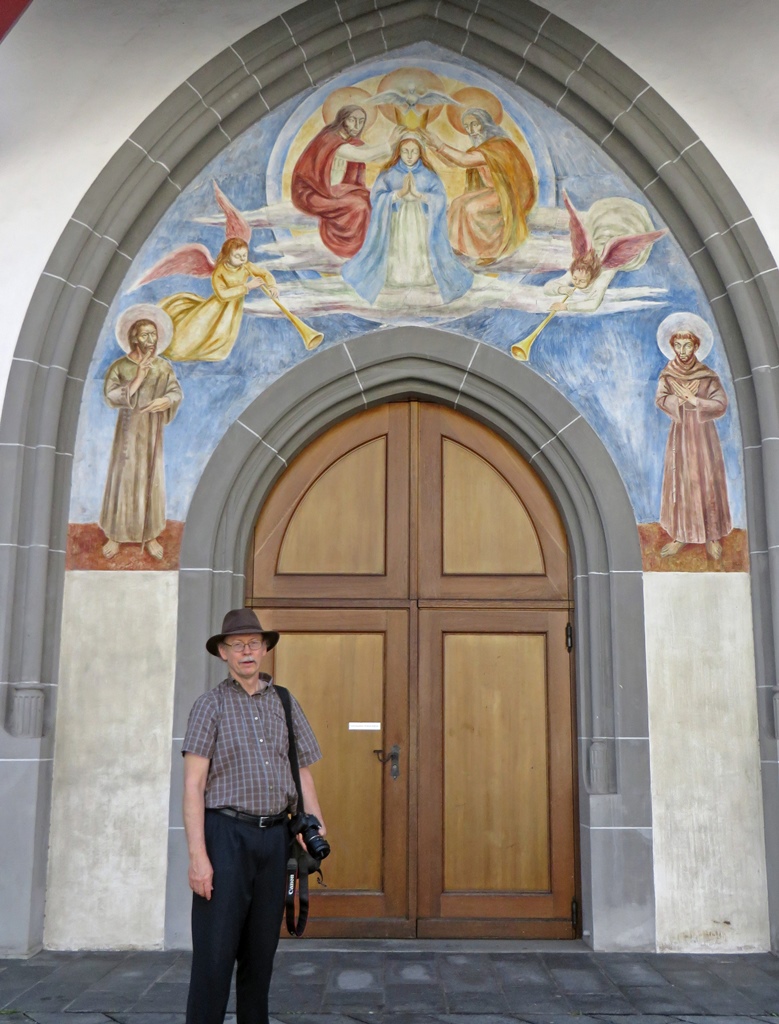
Bob Outside Franziskanerkirche
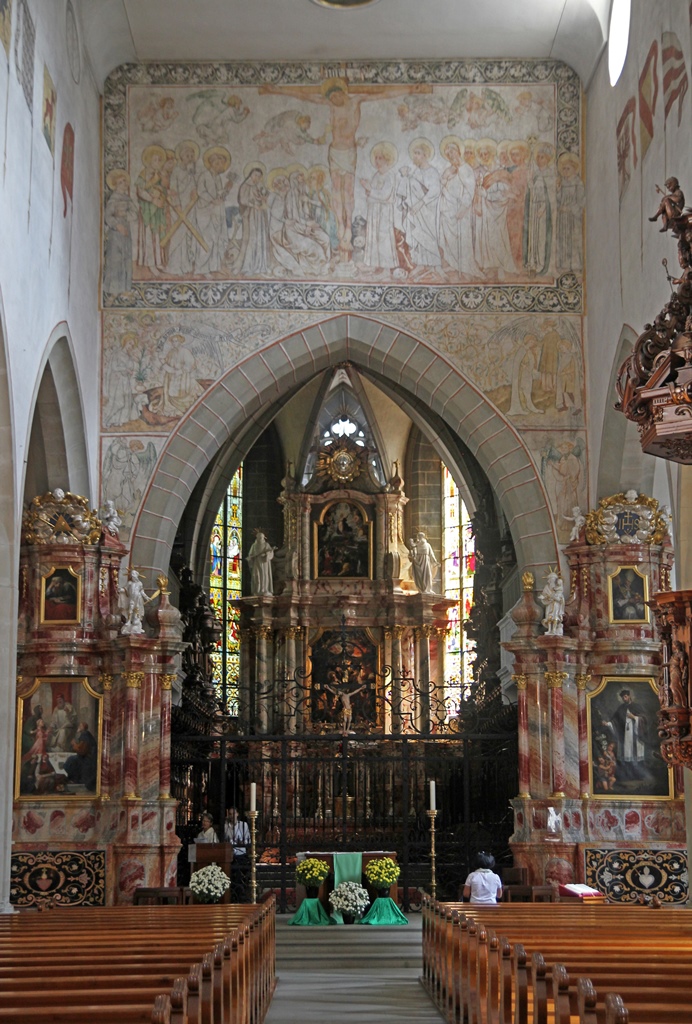
Inside the Franziskanerkirche
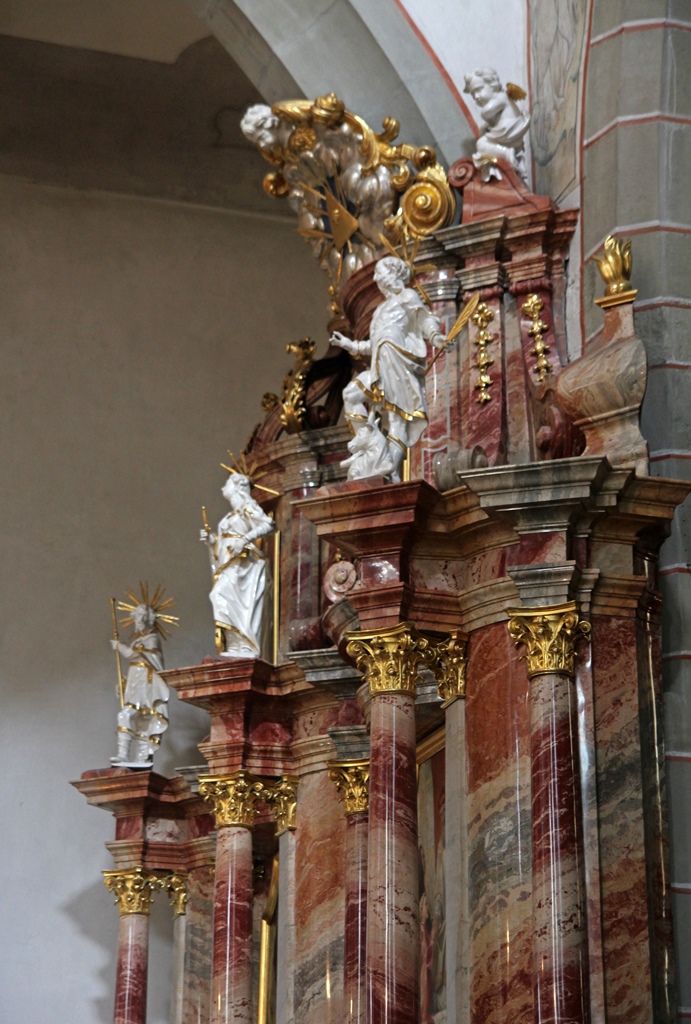
Side Altar
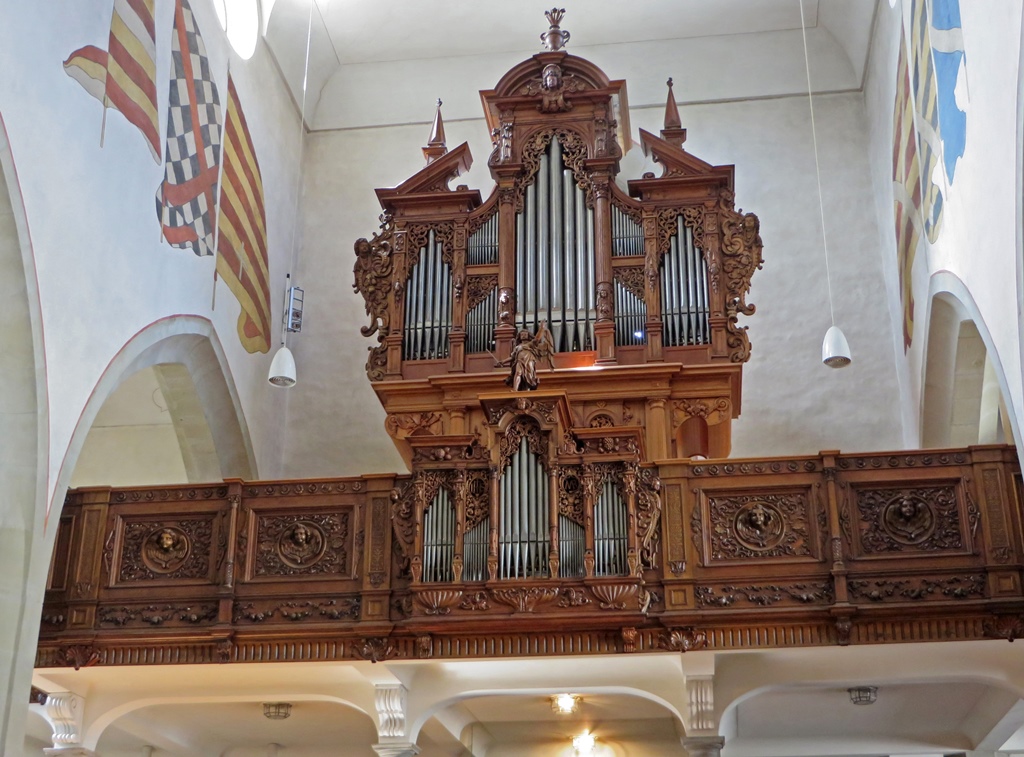
Church Organ (1988)
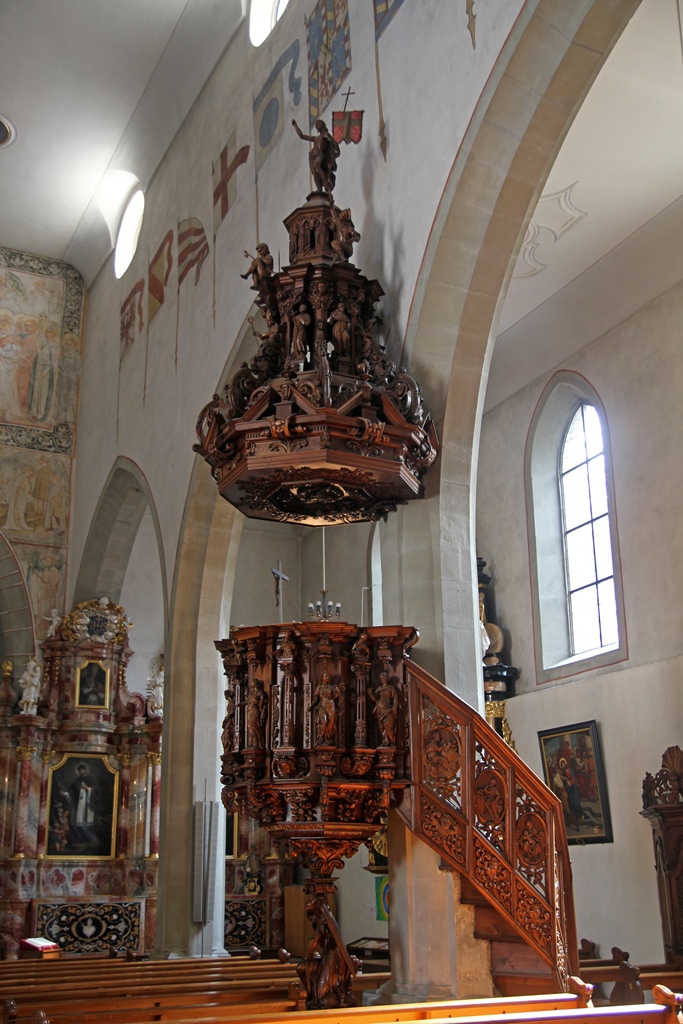
Pulpit (17th C.)
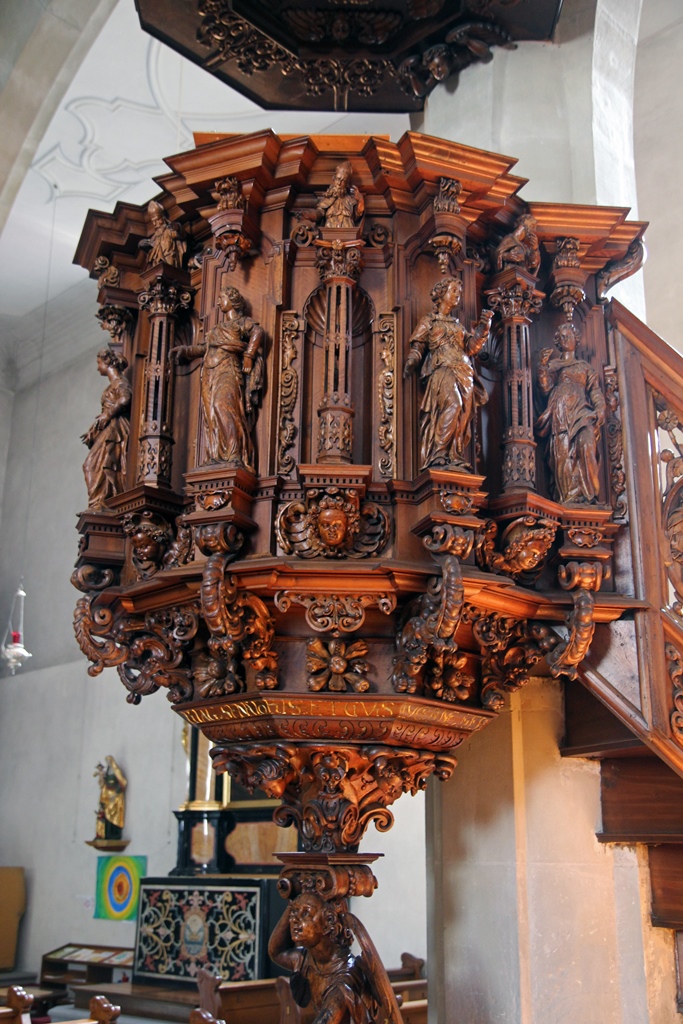
Pulpit Detail
From the Franziskanerkirche we headed toward the Spreuerbrücke. This took us
through an older area, and past what appeared to be a reconstructed apothecary
shop.
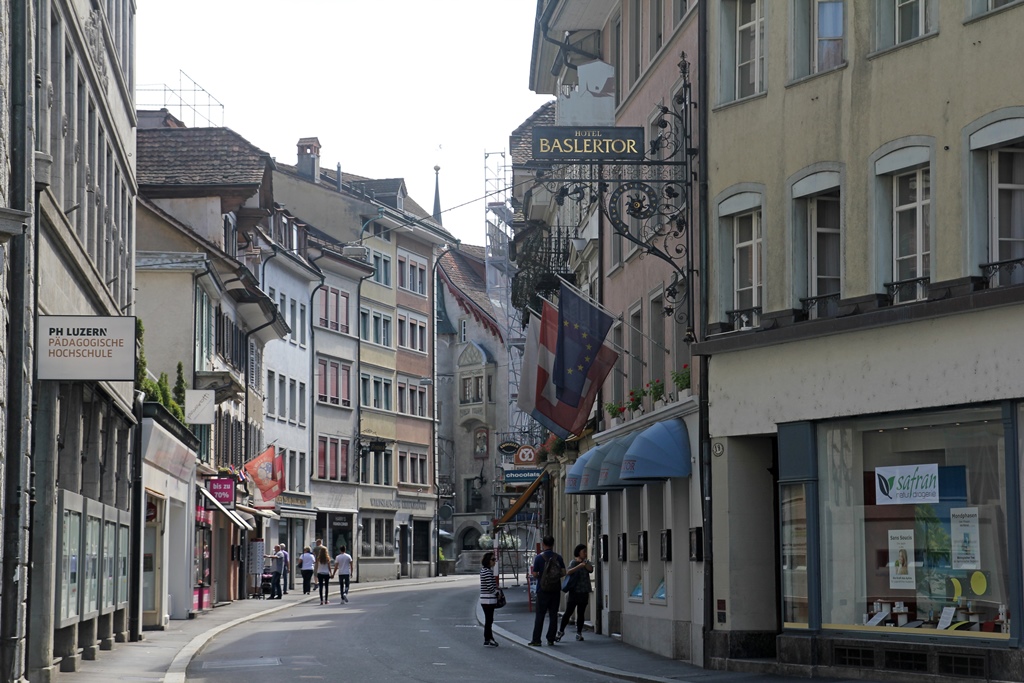
Hotel Baslertor and Pfistergasse
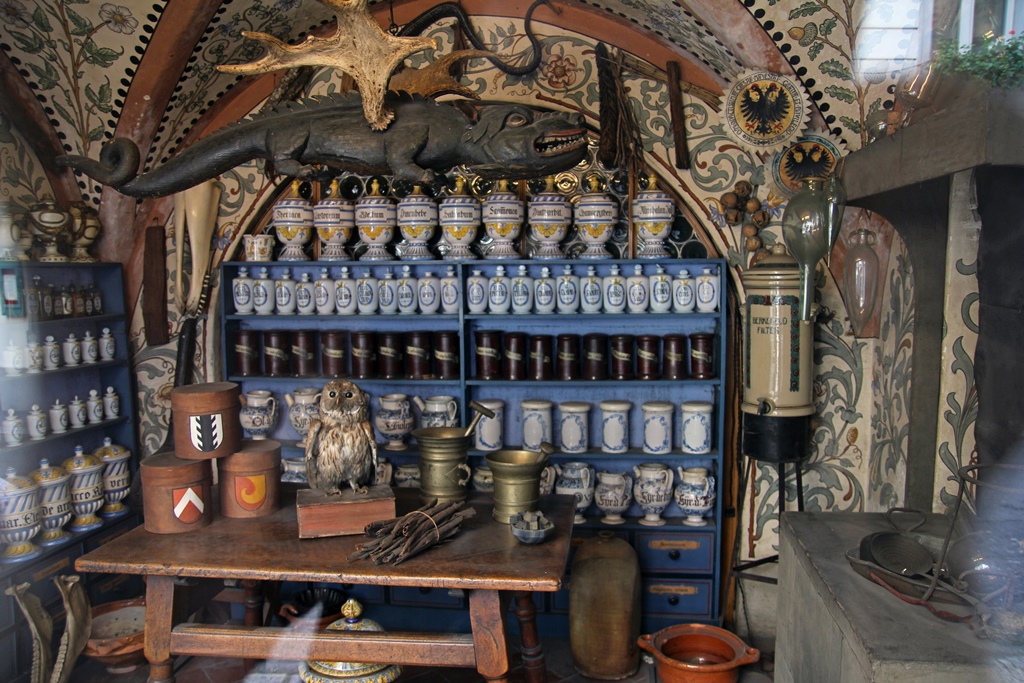
Reconstructed Apothecary Shop
The Spreuerbrücke was like a shorter and newer version of the Kapellbrücke.
The Spreuerbrücke was originally built in 1408, but had to be rebuilt after
1566, as it was destroyed by a flood in that year. Like the Kapellbrücke, it
also has paintings in its rafters, but these are less cheerful, depicting a
"Dance of Death", or Danse Macabre. Part way across the bridge, there's
a tiny chapel, maybe for those depressed by the paintings.
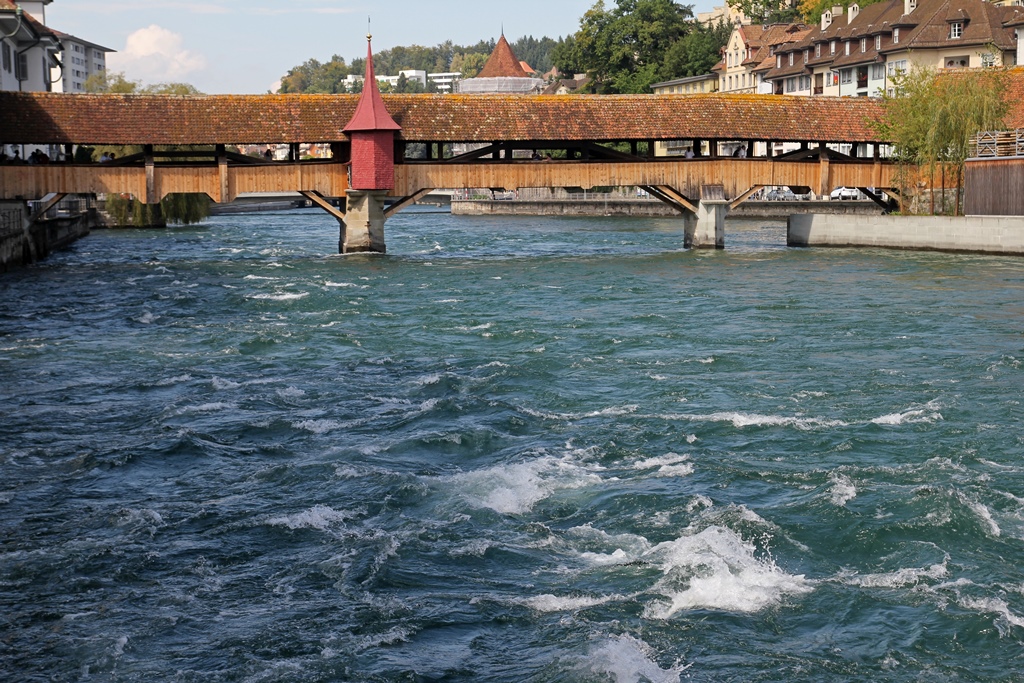
Spreuerbrücke from Reussbrücke
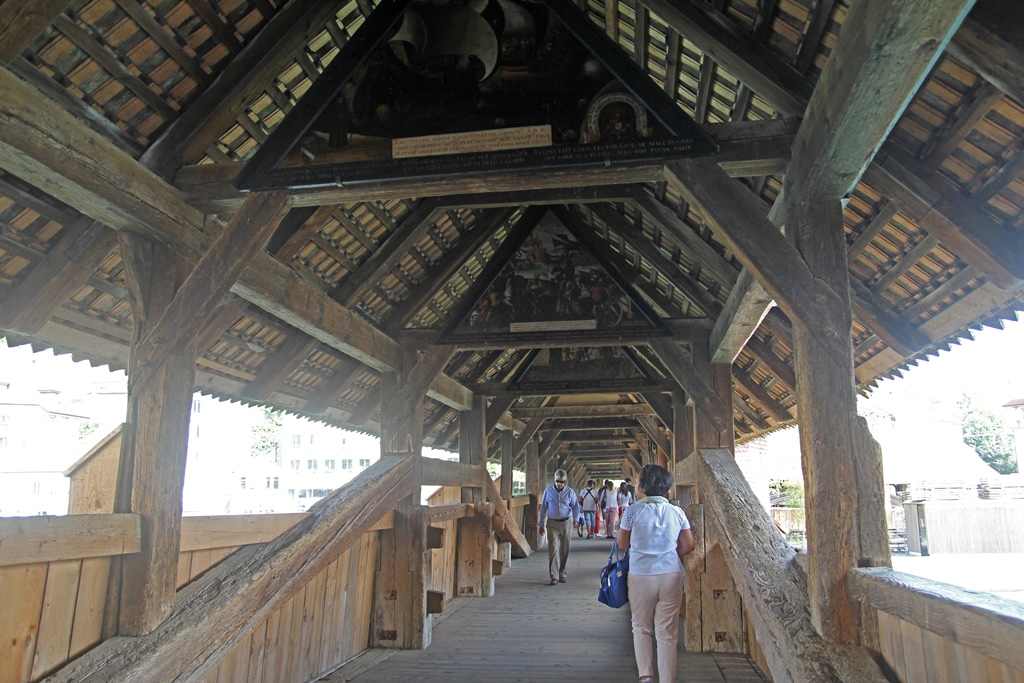
Nella on Spreuerbrücke
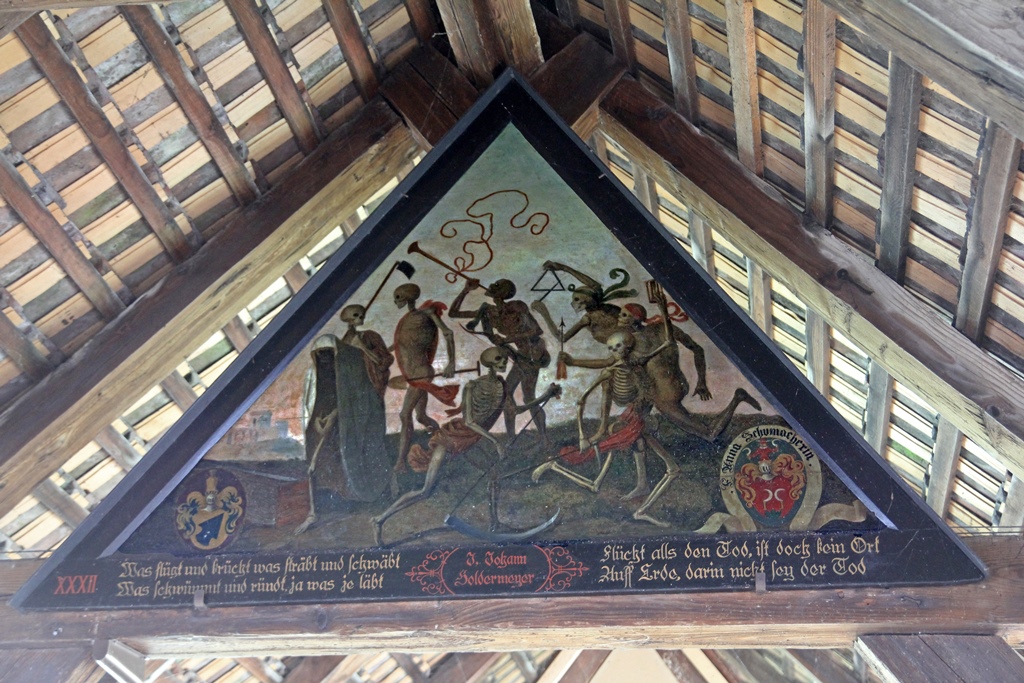
Rafter Painting with Dancing Skeletons
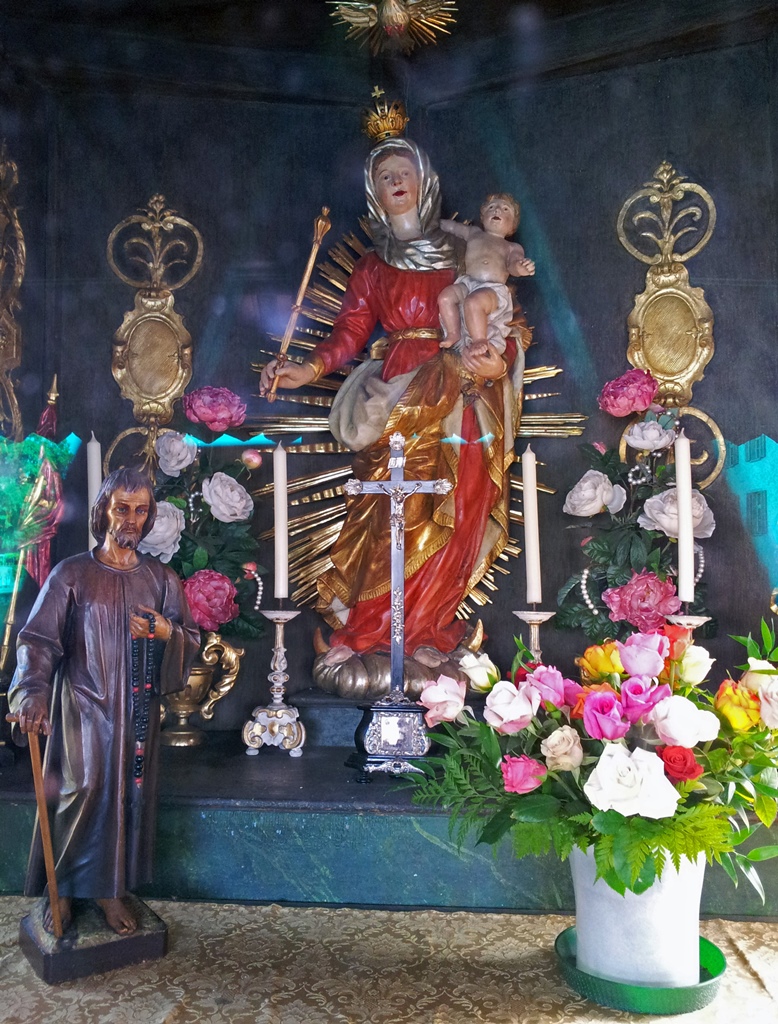
Tiny Chapel on Spreuerbrücke
The Spreuerbrücke also had a nice view of the Needle Dam we'd seen from the
Reussbrücke, from the other side.
Upstream from Spreuerbrücke
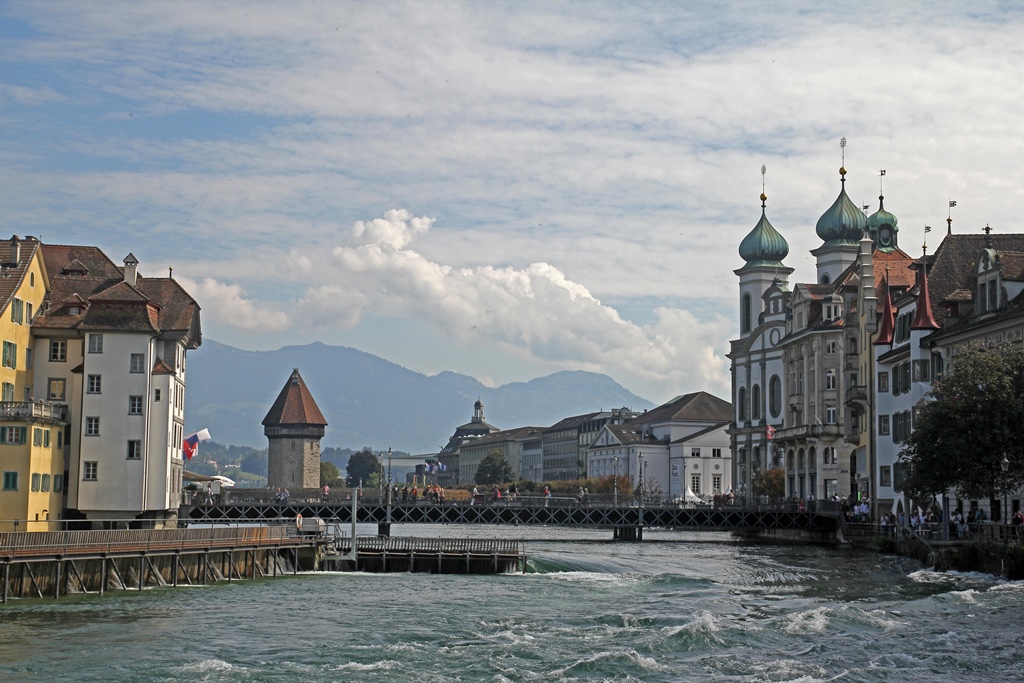
Nadelwehr from Spreuerbrücke
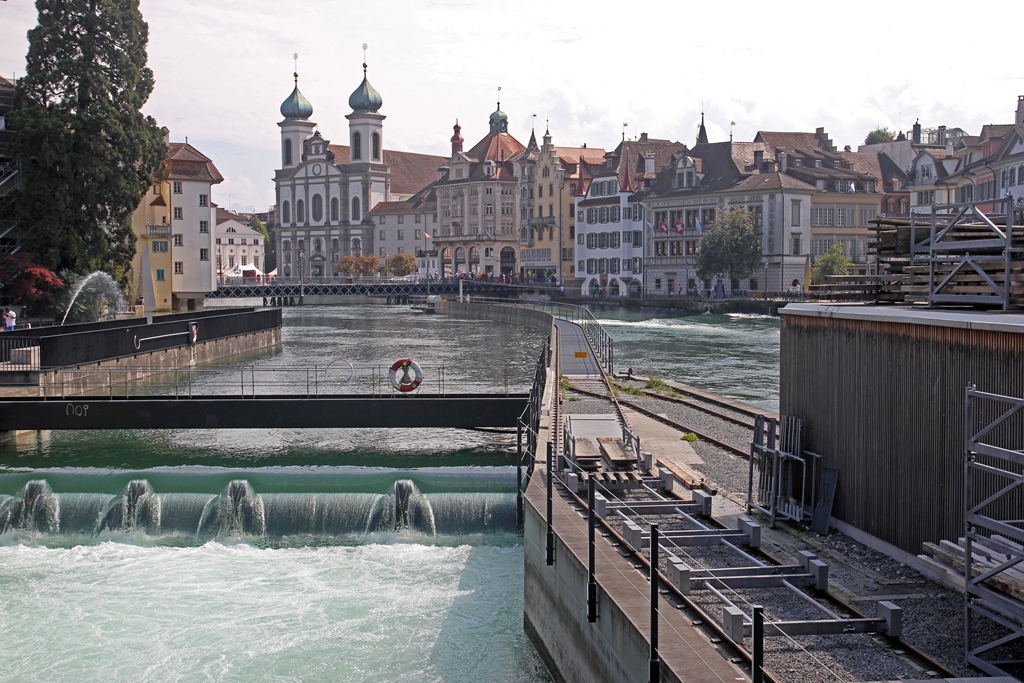
Nadelwehr from Spreuerbrücke (Hydroelectric Part)
We continued across the Spreuerbrücke and finally made it all the way across the Reuss.
This took us into Lucerne's Old Town, complete with old buildings and narrow, winding
streets. There were some unmistakably modern touches, though.
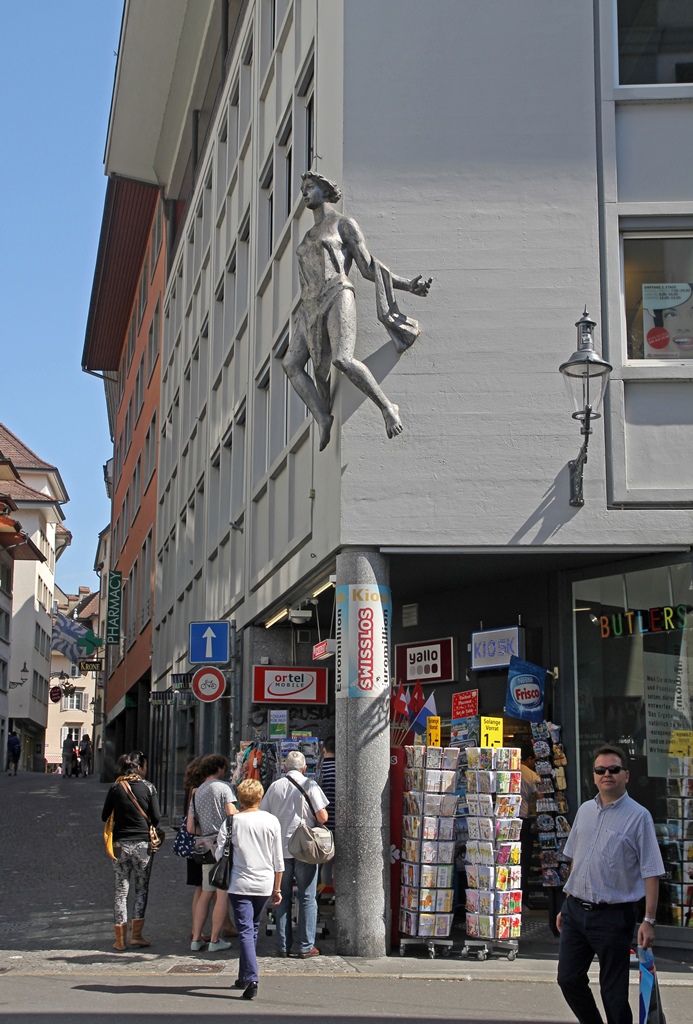
Woman Stuck to Building, Mühlenplatz
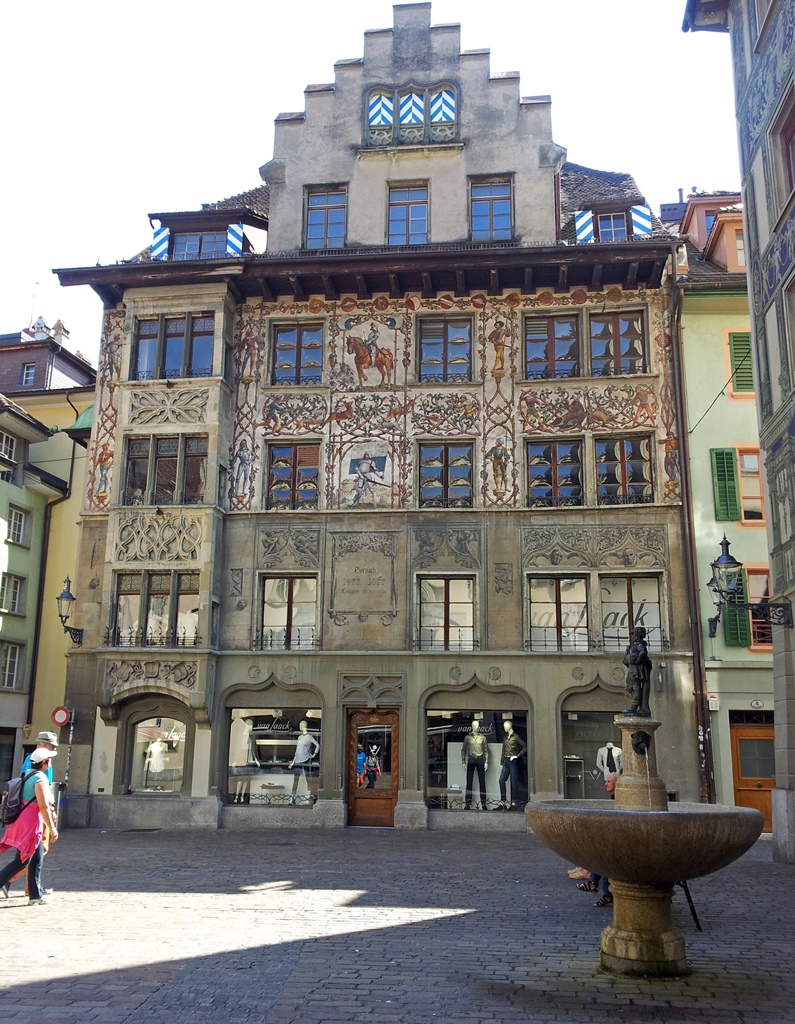
Decorated Building on Hirschenplatz
Bob Approaching Kapellgasse
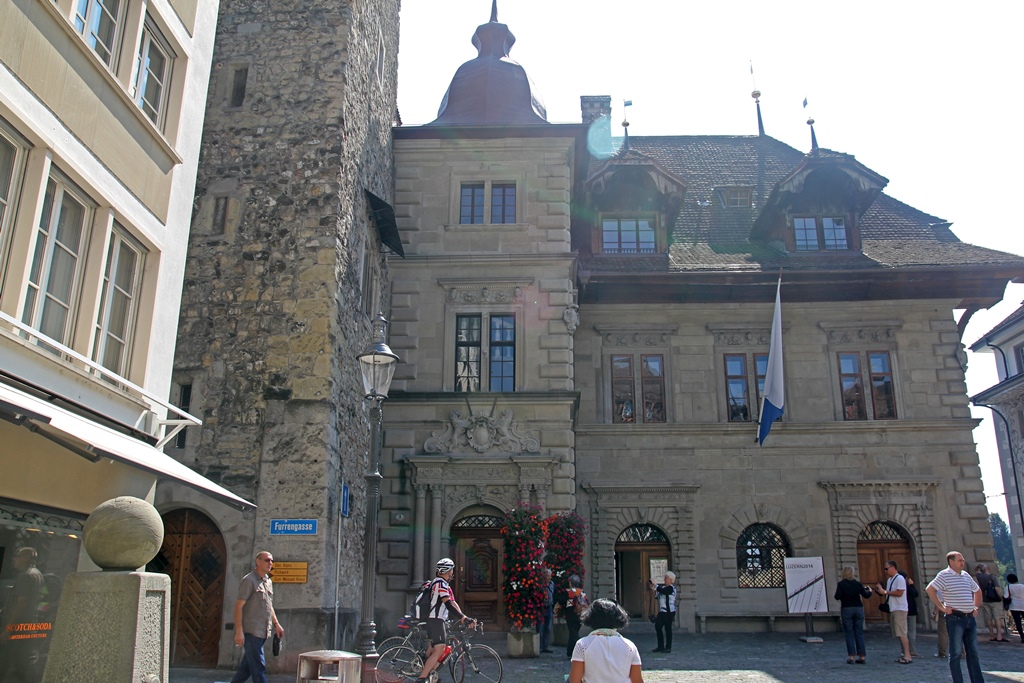
Old Lucerne Town Hall
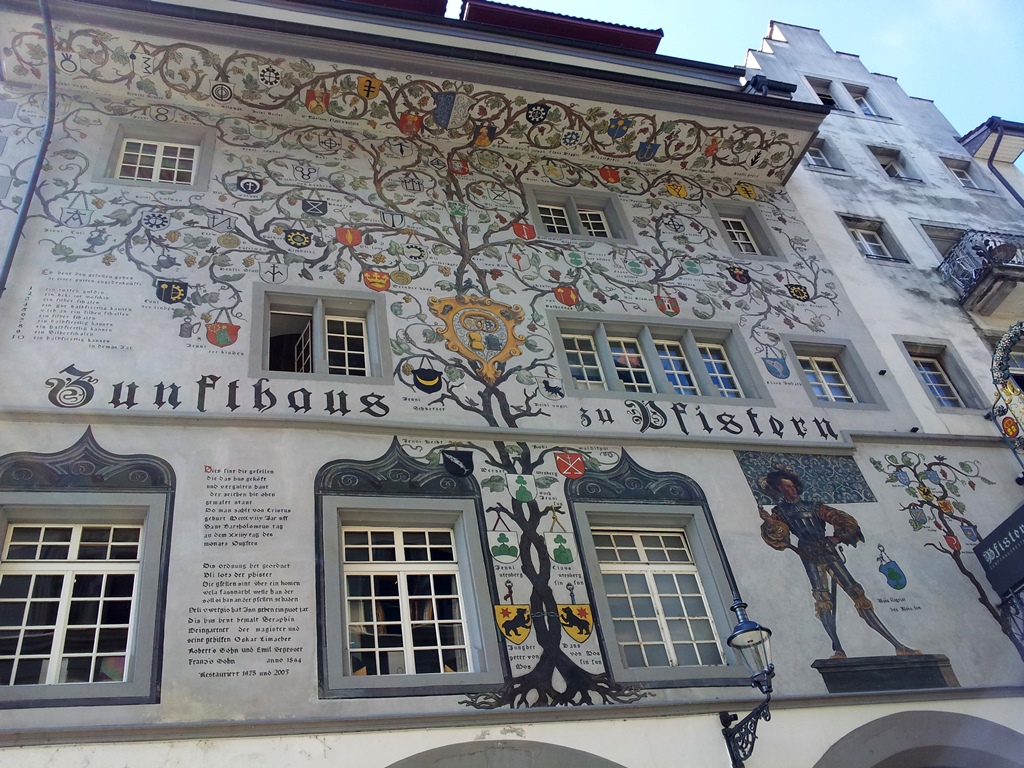
Family Tree on Zunfthaus zu Pfistern
We headed through the Old Town back toward the lake, eventually arriving at the
north end of the Kapellbrücke. We used the bridge to cross back to the other
side of the river, near the train station.
Kapellbrücke
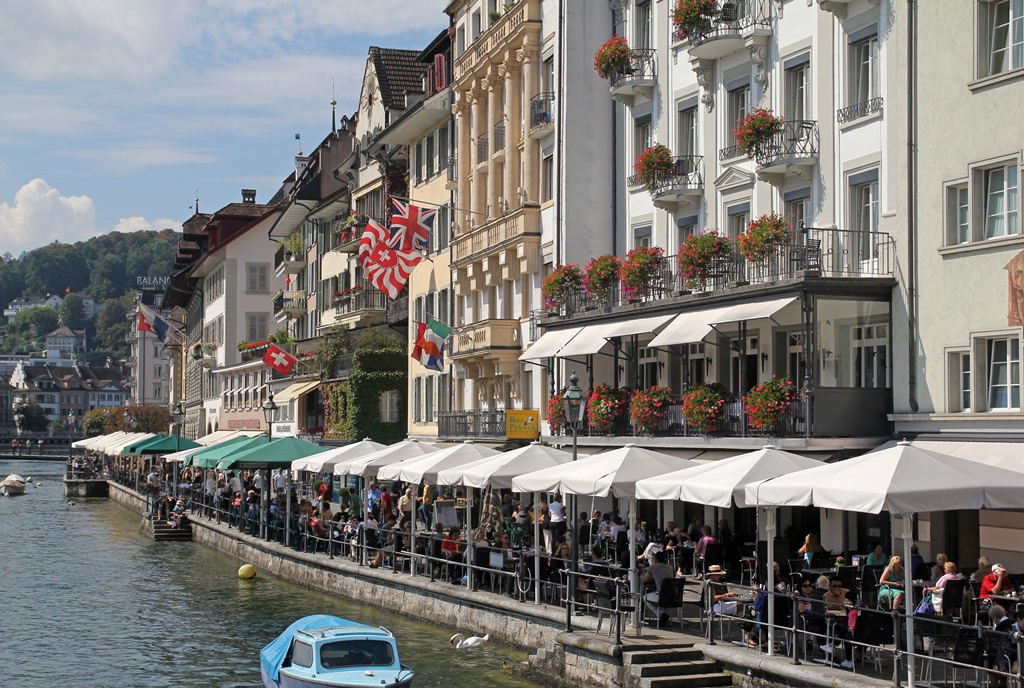
Restaurants Near Kapellbrücke
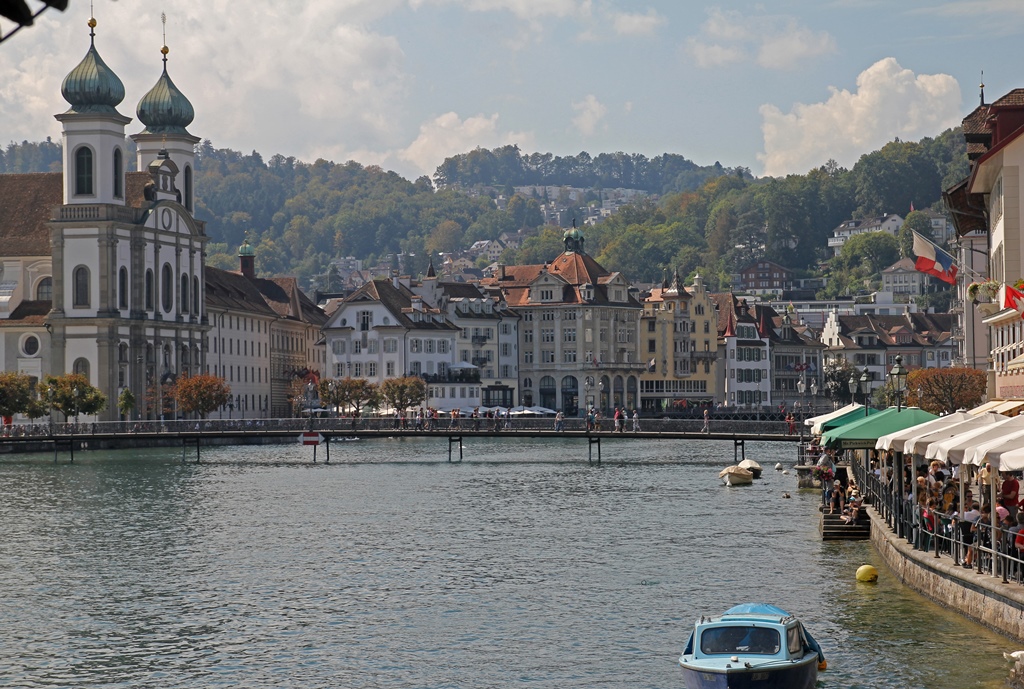
Jesuitenkirche and Footbridge from Kapellbrücke
We found ourselves near the departure point for lake cruises. This seemed like
an interesting idea, so we bought some tickets for a one-hour cruise that was
leaving shortly and waited for our boat.



